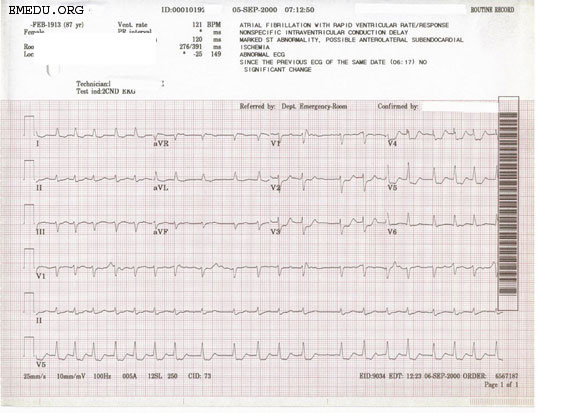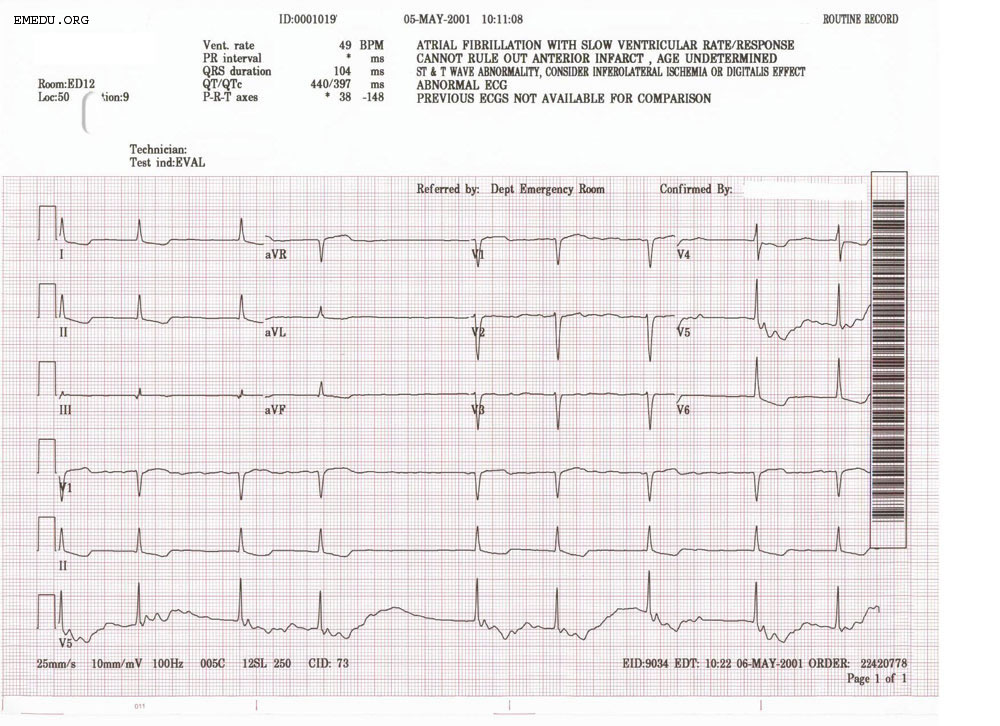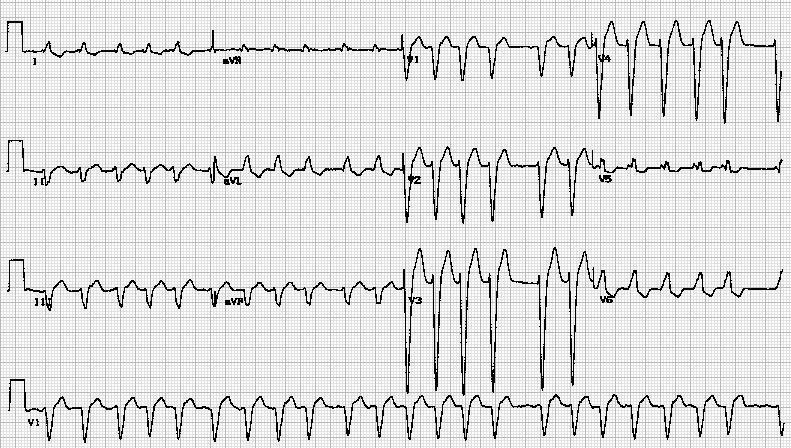Atrial fibrillation EKG examples: Difference between revisions
No edit summary |
No edit summary |
||
| Line 165: | Line 165: | ||
[[Image:Atrial fibrillation 29.jpg|center|800px]] | [[Image:Atrial fibrillation 29.jpg|center|800px]] | ||
---- | |||
Shown below is an example of an EKG showing atrial fibrillation with rapid ventricular rate response and [[left bundle branch block]]. | |||
[[Image:Atrial fibrillation 30.jpg|center|800px]] | |||
---- | ---- | ||
Revision as of 18:30, 15 October 2012
Editor-In-Chief: C. Michael Gibson, M.S., M.D. [1] Associate Editor: Cafer Zorkun, M.D., Ph.D. [2]
For the main page on atrial fibrillation, click here.
Shown below is an example of an EKG showing atrial fibrillation with rapid ventricular rate response and left bundle branch block.
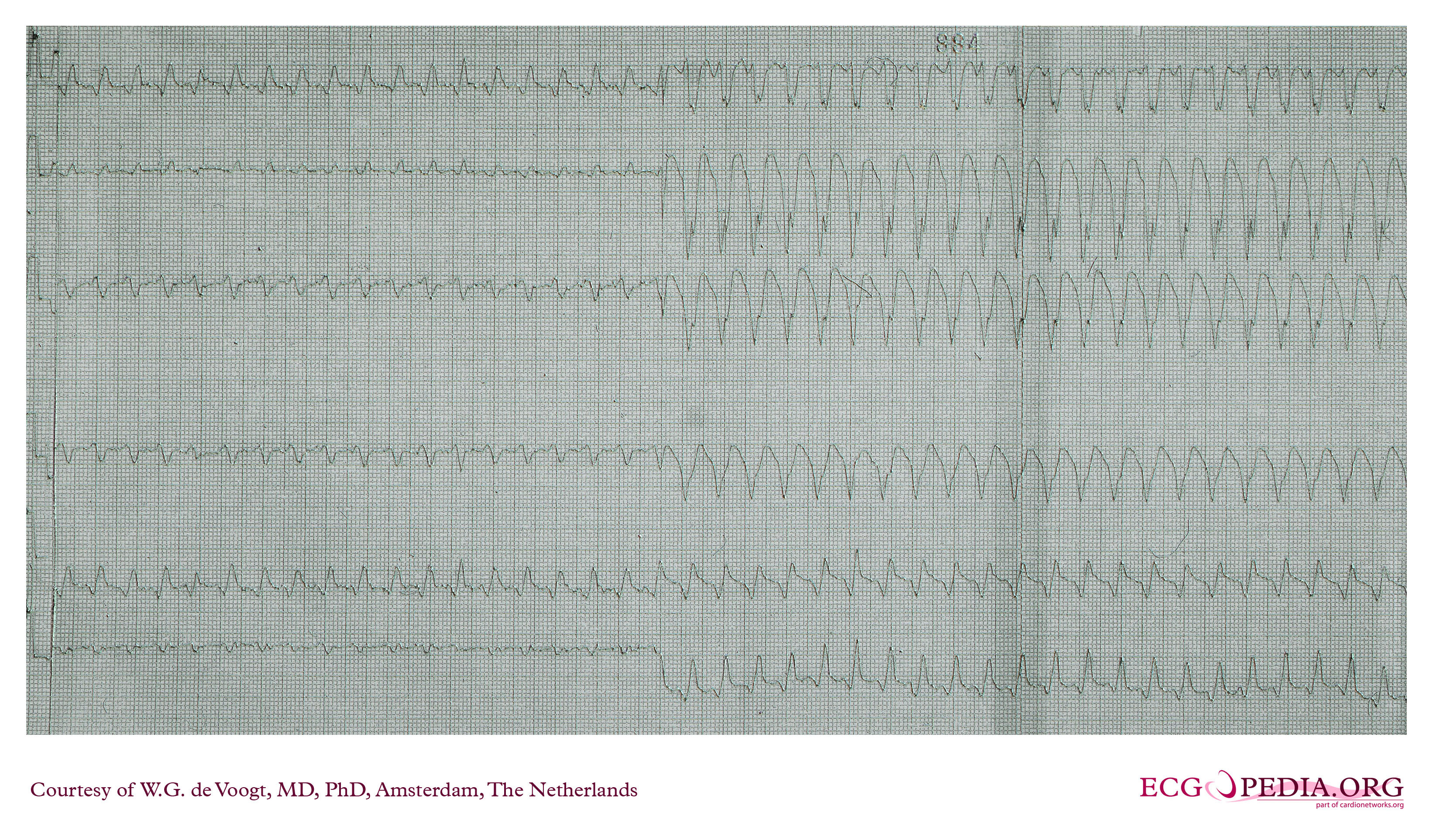
Shown below is an example of an EKG showing atrial fibrillation with rapid ventricular rate response and left bundle branch block.

Shown below is an example of an EKG showing atrial fibrillation with rapid ventricular rate response and left bundle branch block.
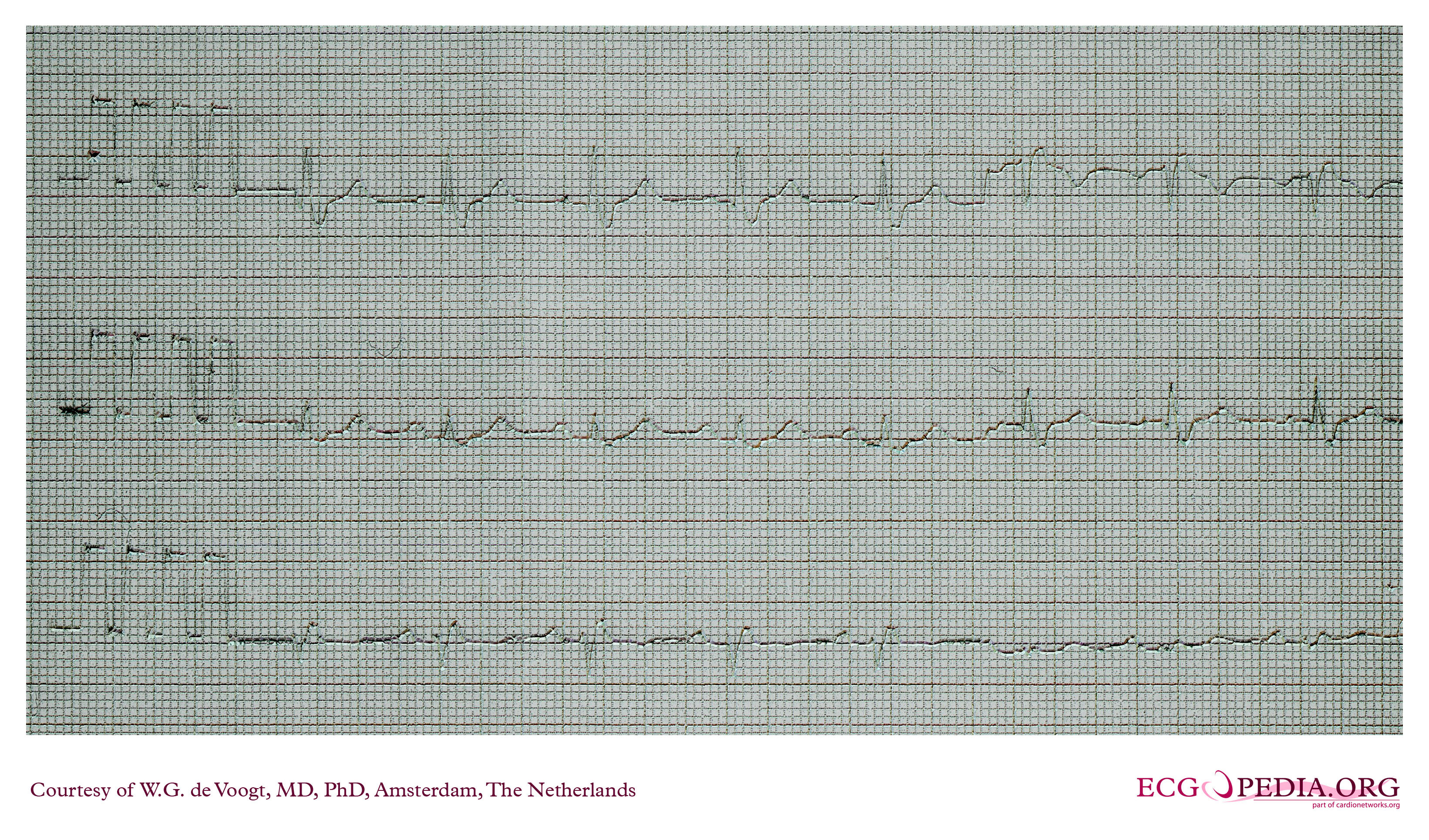
Shown below is an example of an EKG showing atrial fibrillation with rapid ventricular rate response and left bundle branch block.
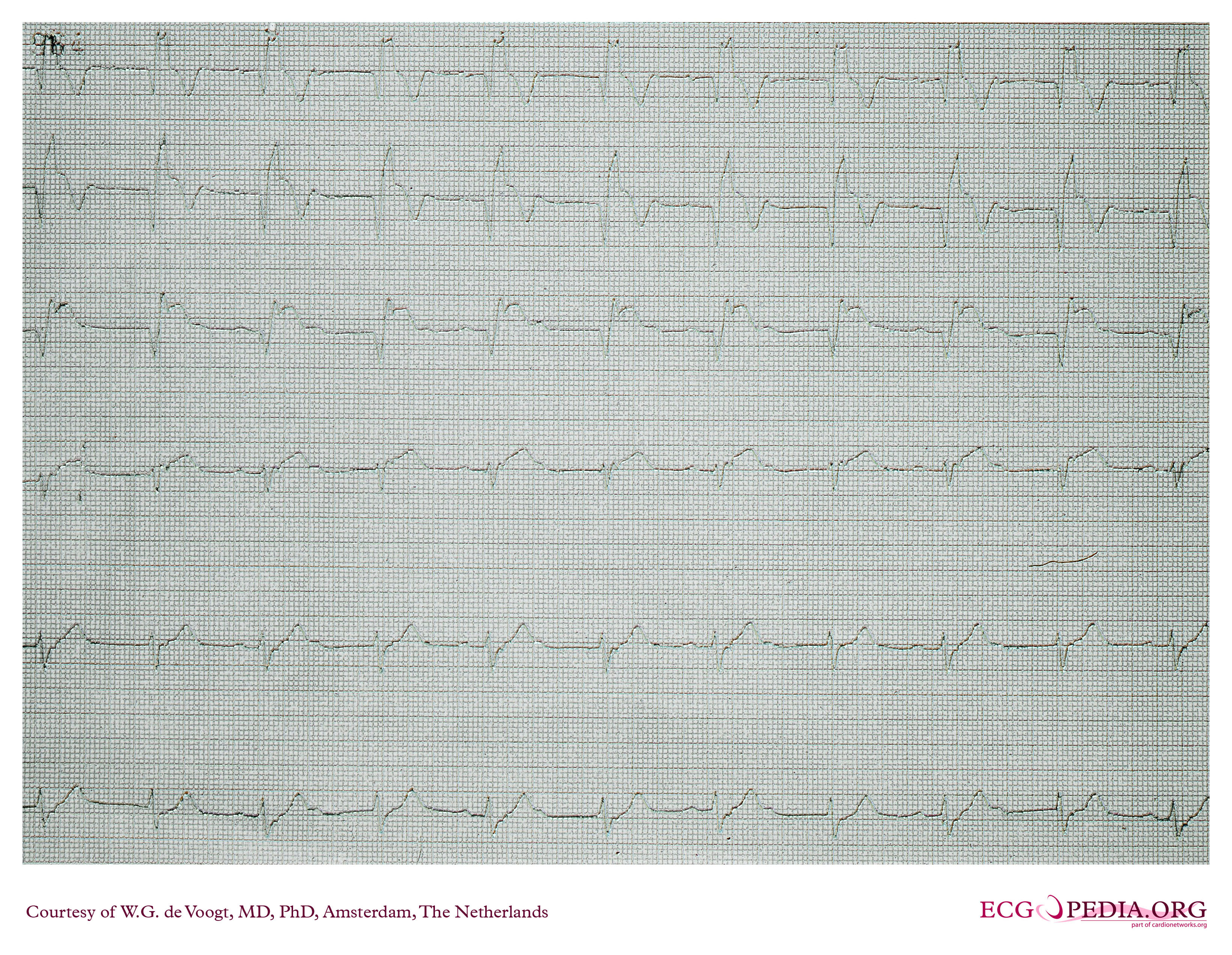
Shown below is an example of an EKG showing atrial fibrillation with rapid ventricular rate response and left bundle branch block.
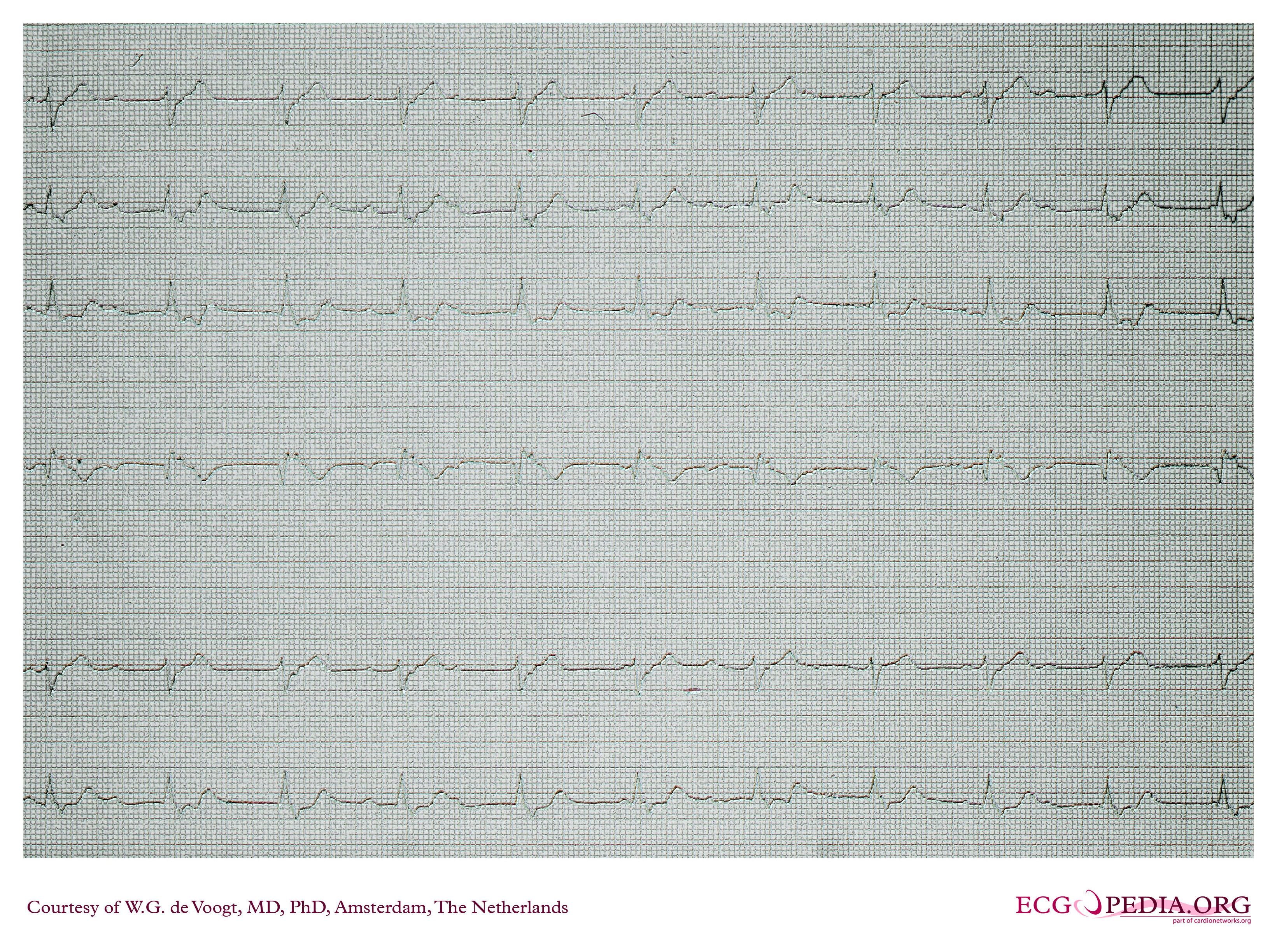
Shown below is an example of an EKG showing atrial fibrillation with rapid ventricular rate response and left bundle branch block.
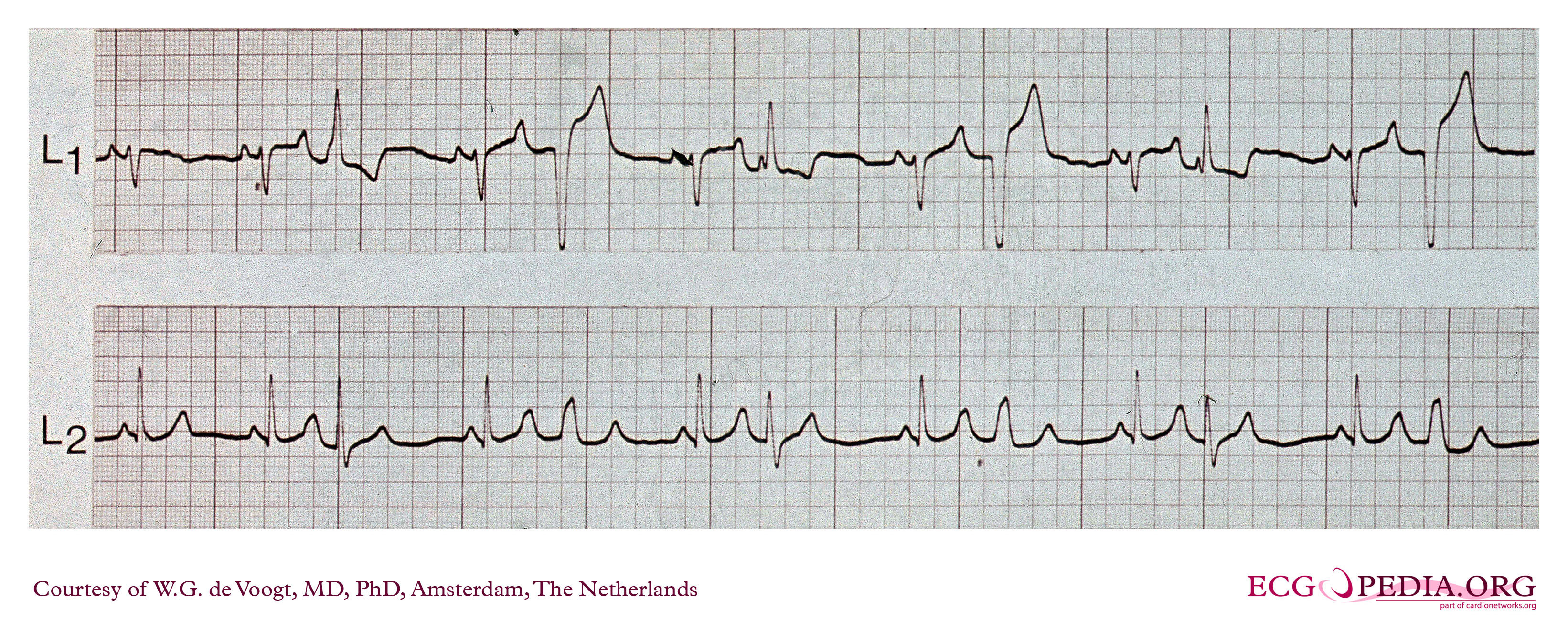
Shown below is an example of an EKG showing atrial fibrillation with rapid ventricular rate response and left bundle branch block.
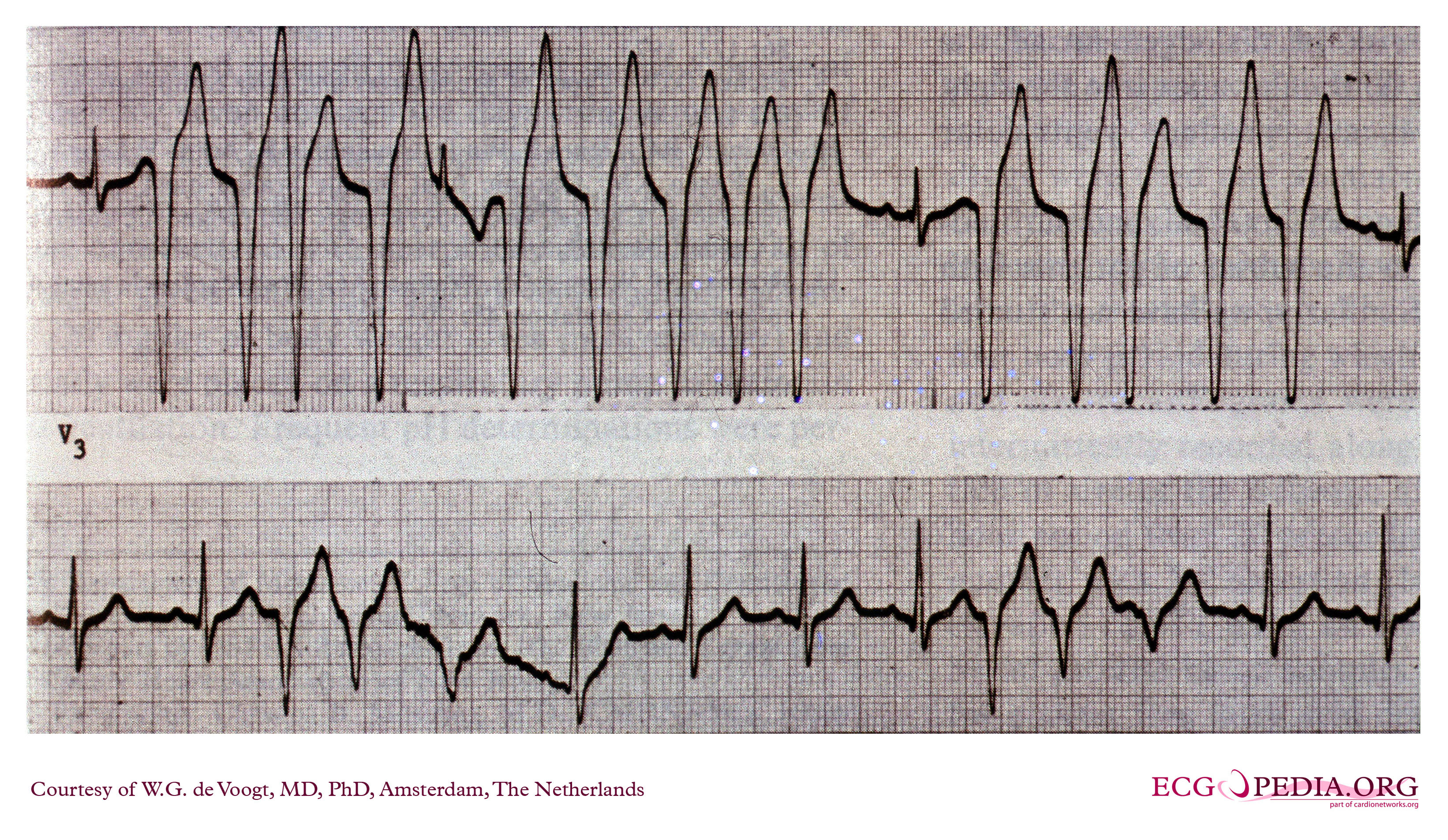
Shown below is an example of an EKG showing atrial fibrillation with rapid ventricular rate response and left bundle branch block.
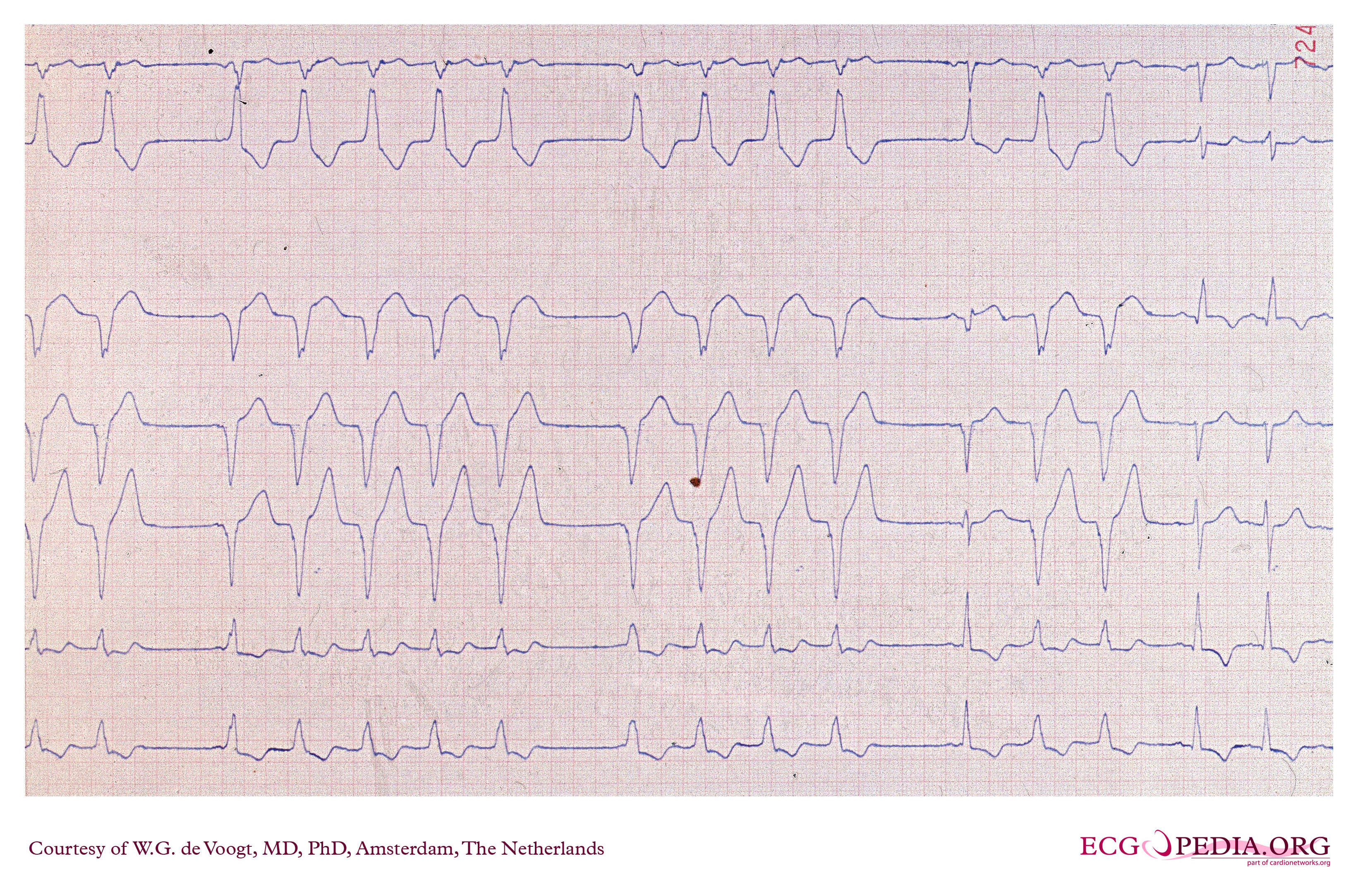
Shown below is an example of an EKG showing atrial fibrillation with rapid ventricular rate response and left bundle branch block.
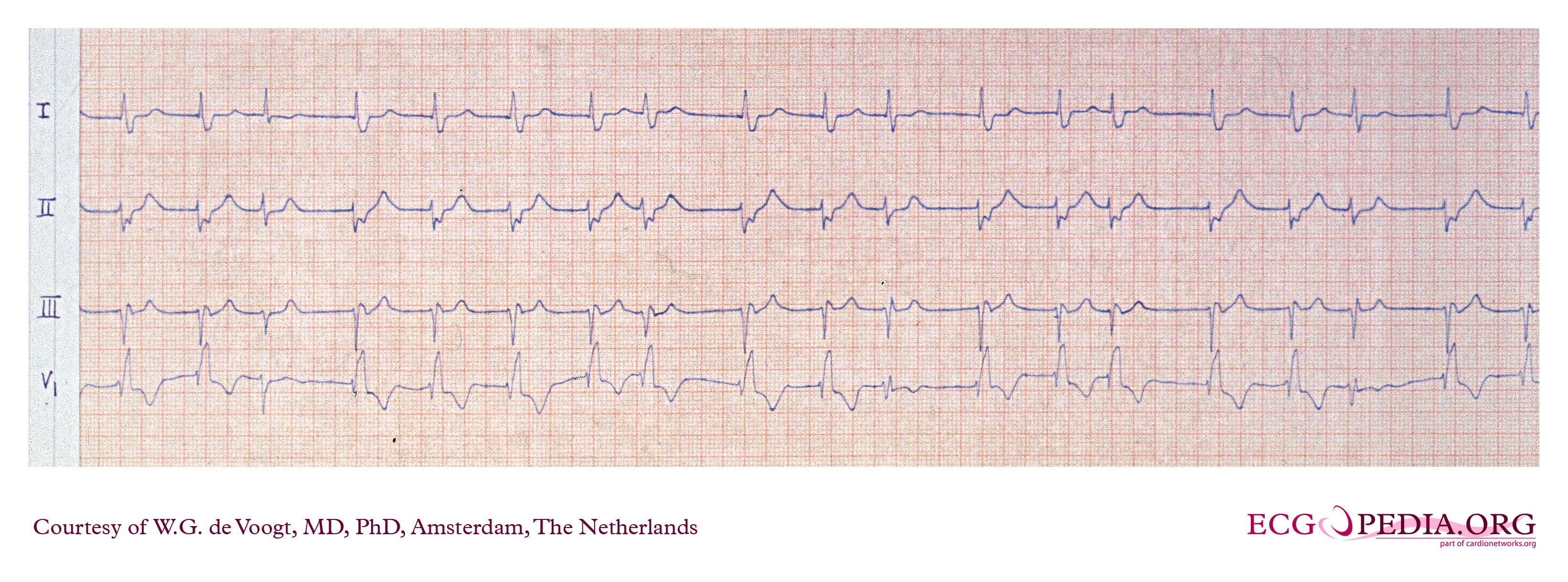
Shown below is an example of an EKG showing atrial fibrillation with rapid ventricular rate response and left bundle branch block.
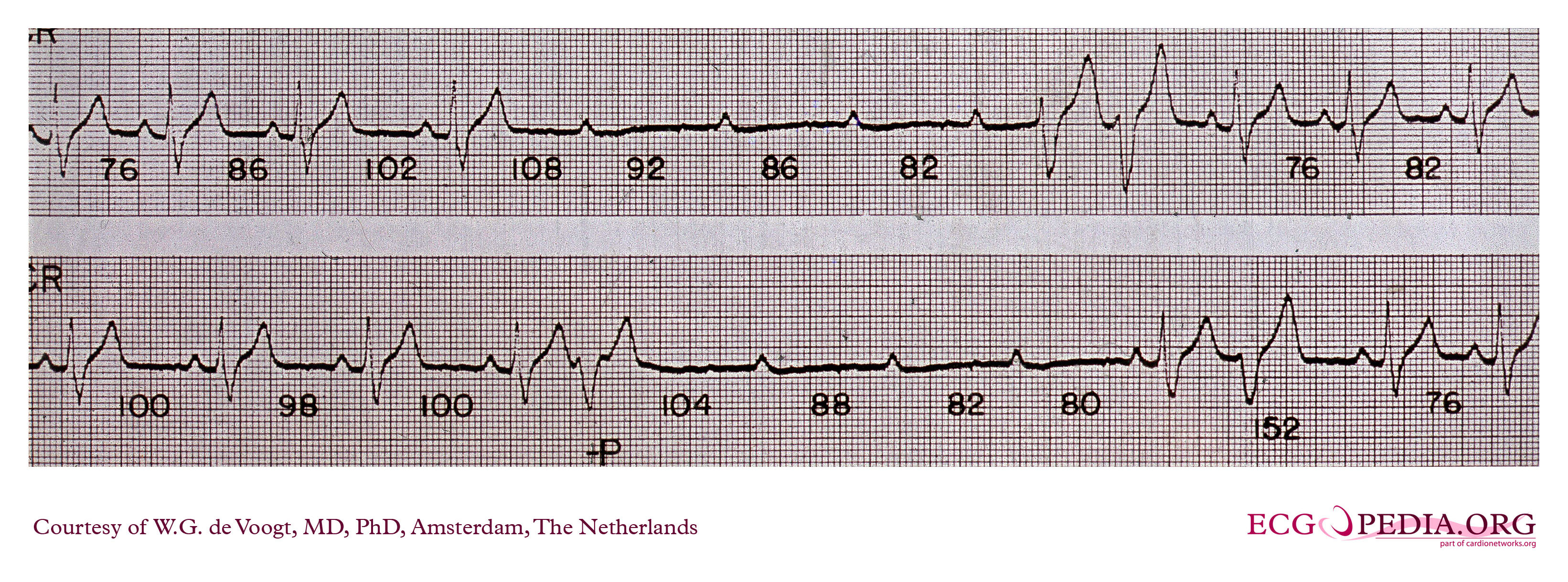
Shown below is an example of an EKG showing atrial fibrillation with rapid ventricular rate response and left bundle branch block.
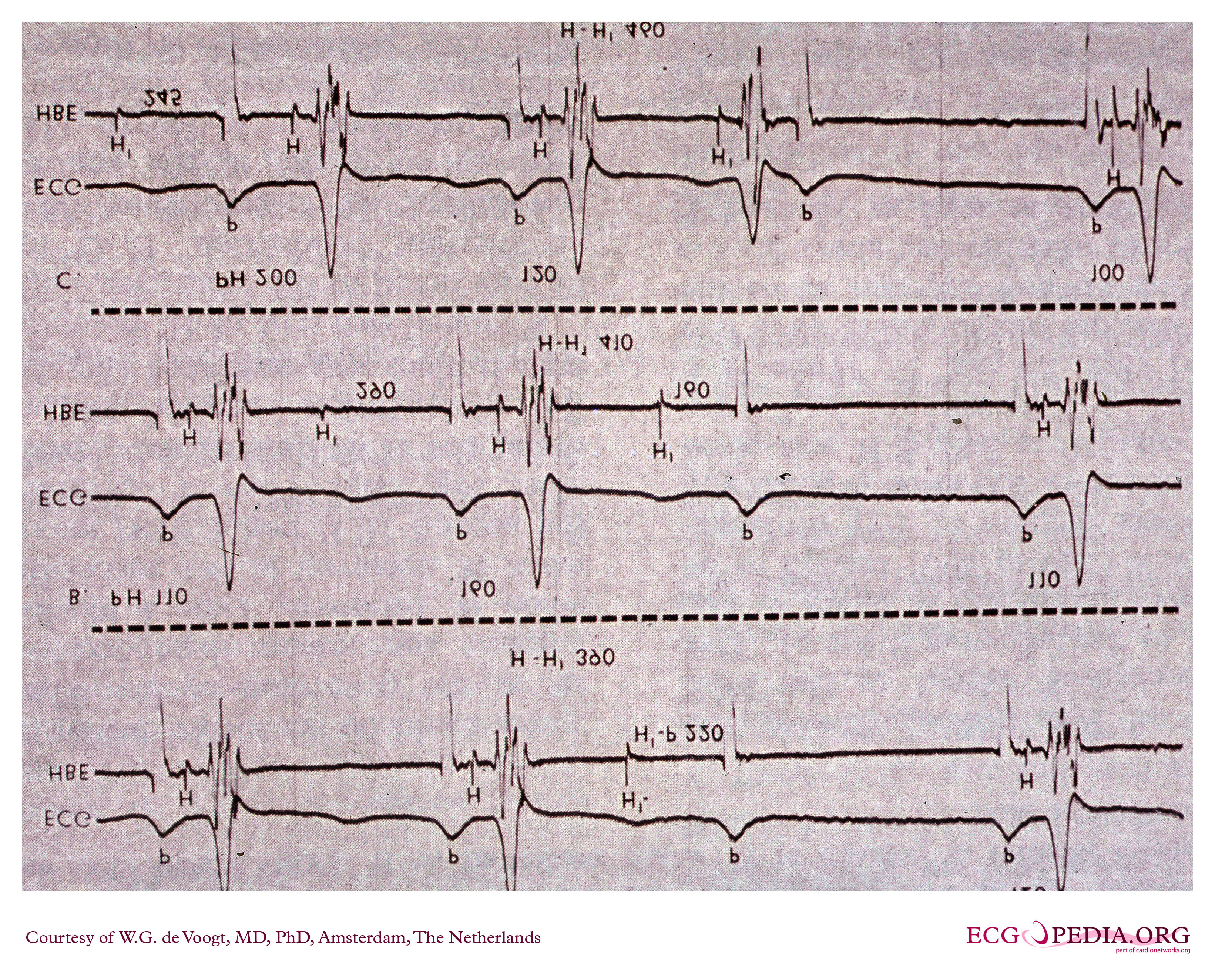
Shown below is an example of an EKG showing atrial fibrillation with rapid ventricular rate response and left bundle branch block.
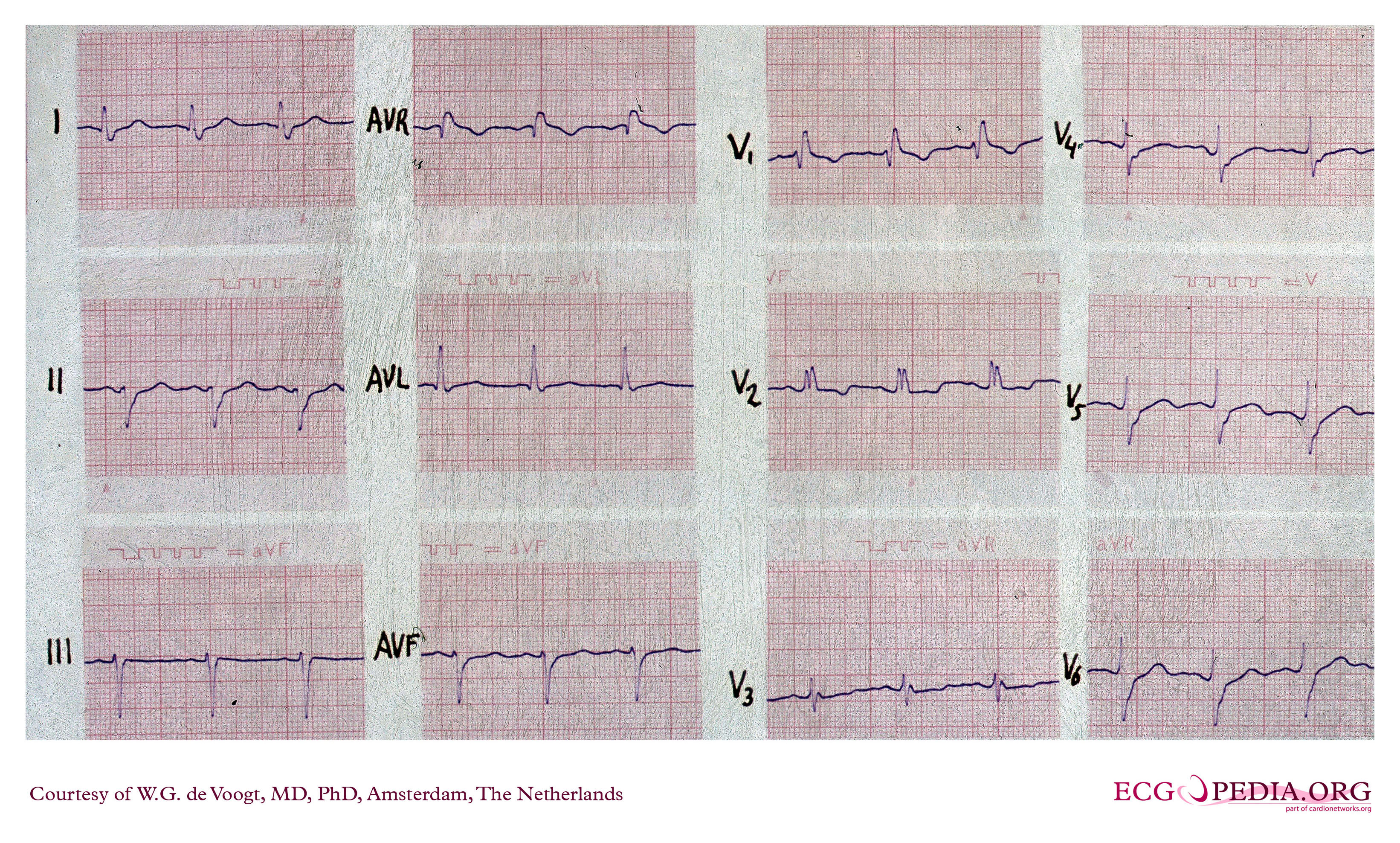
Shown below is an example of an EKG showing atrial fibrillation with rapid ventricular rate response and left bundle branch block.
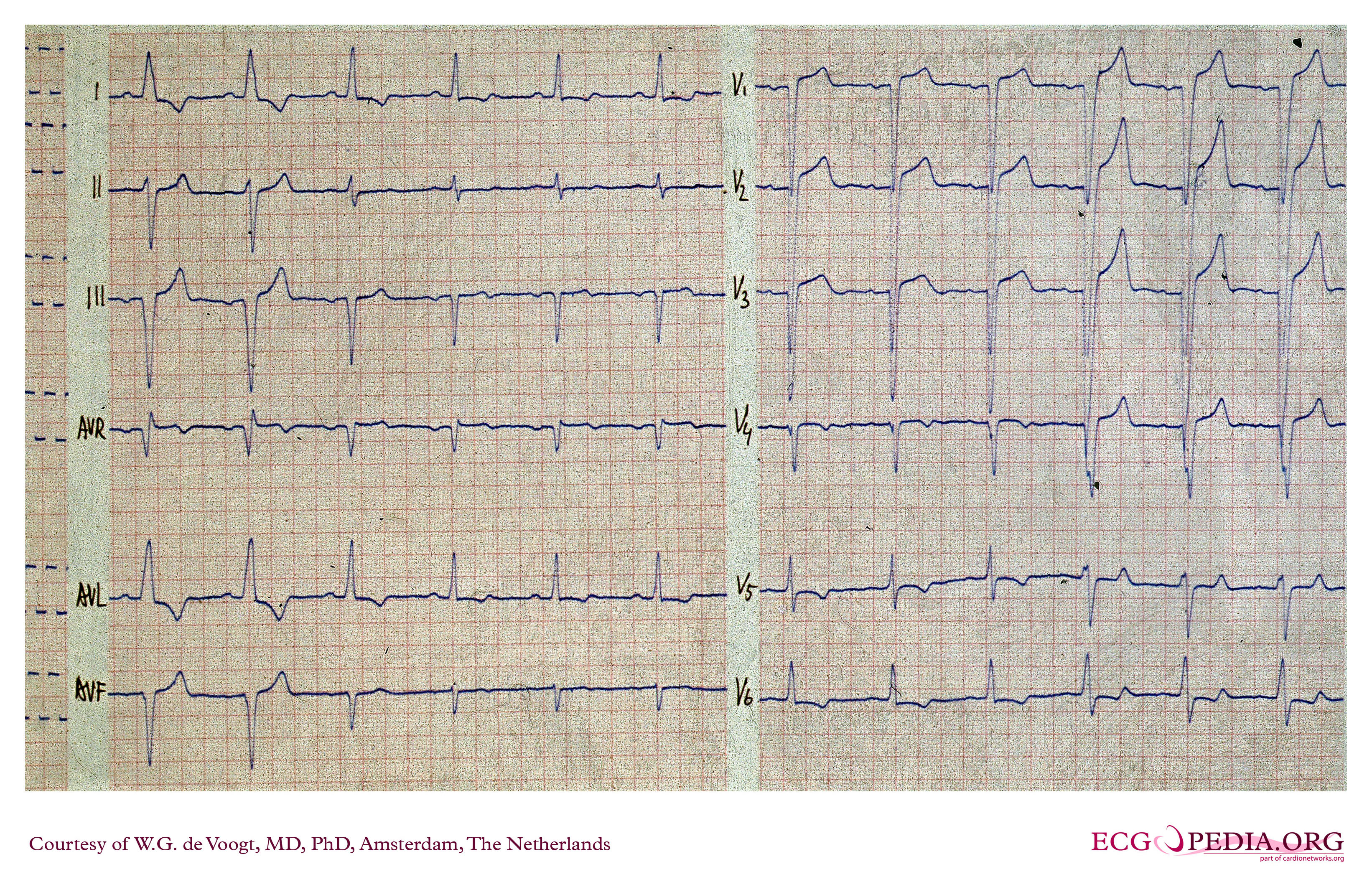
Shown below is an example of an EKG showing atrial fibrillation with rapid ventricular rate response and left bundle branch block.
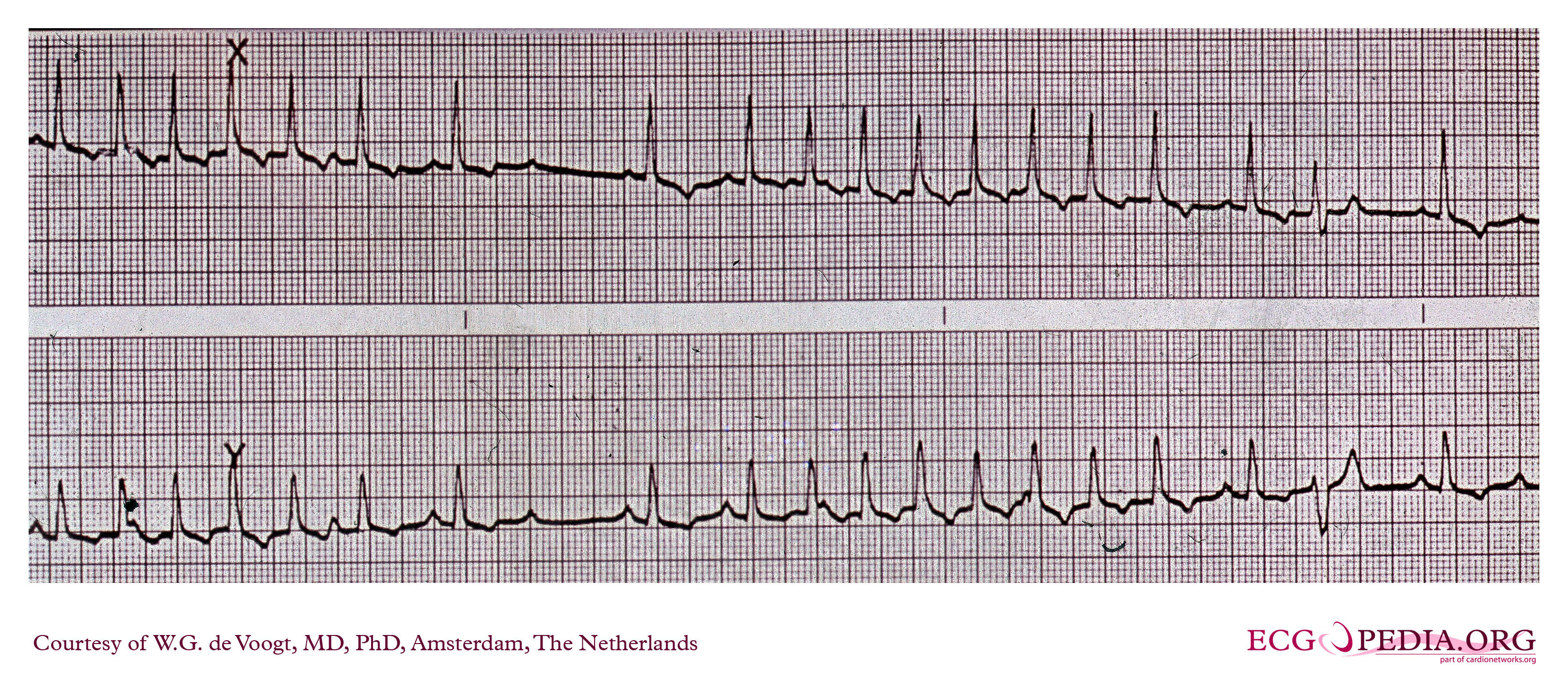
Shown below is an example of an EKG showing atrial fibrillation with rapid ventricular rate response and left bundle branch block.
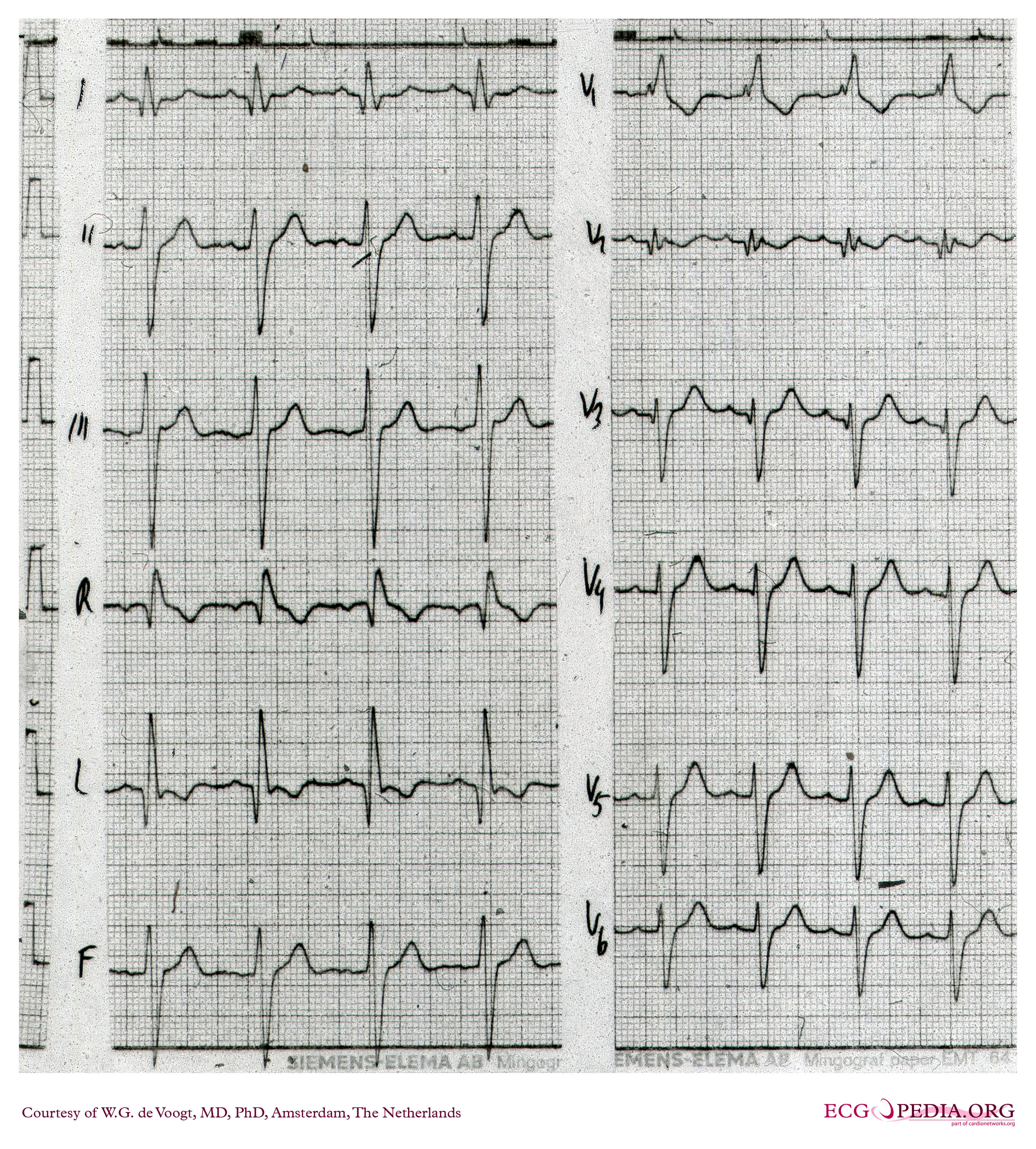
Shown below is an example of an EKG showing atrial fibrillation with rapid ventricular rate response and left bundle branch block.
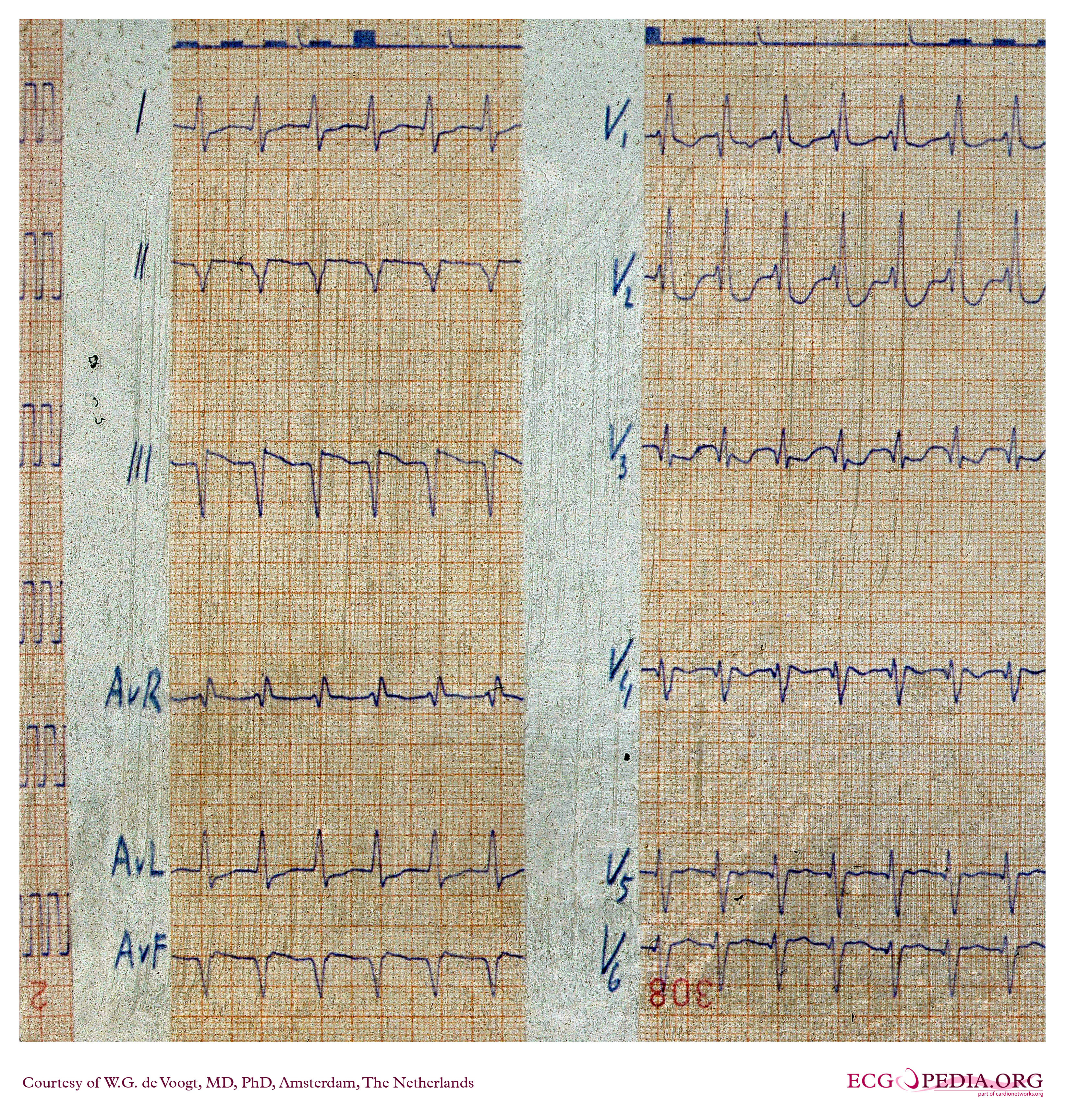
Shown below is an example of an EKG showing atrial fibrillation with rapid ventricular rate response and left bundle branch block.
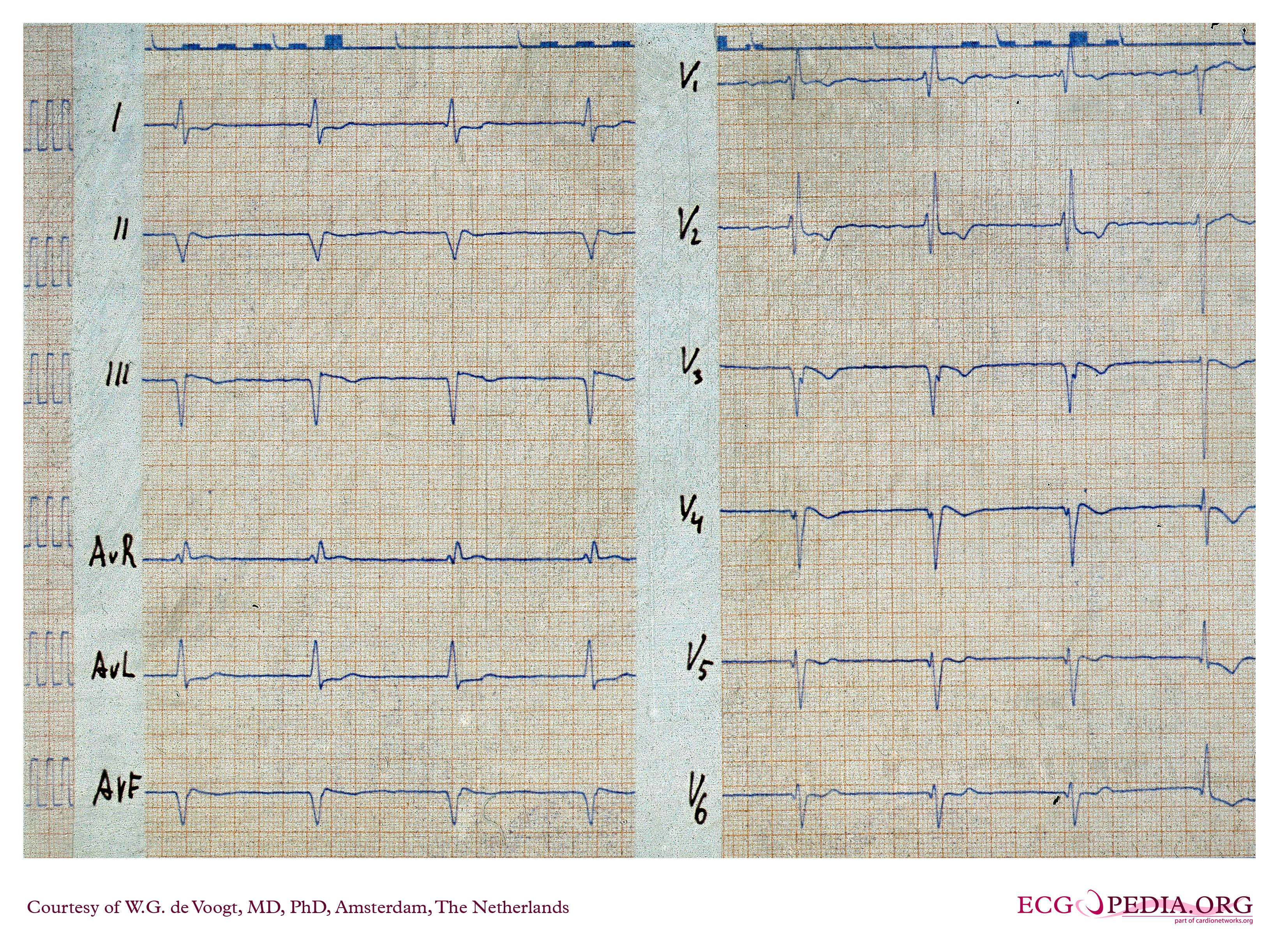
Shown below is an example of an EKG showing atrial fibrillation with rapid ventricular rate response and left bundle branch block.
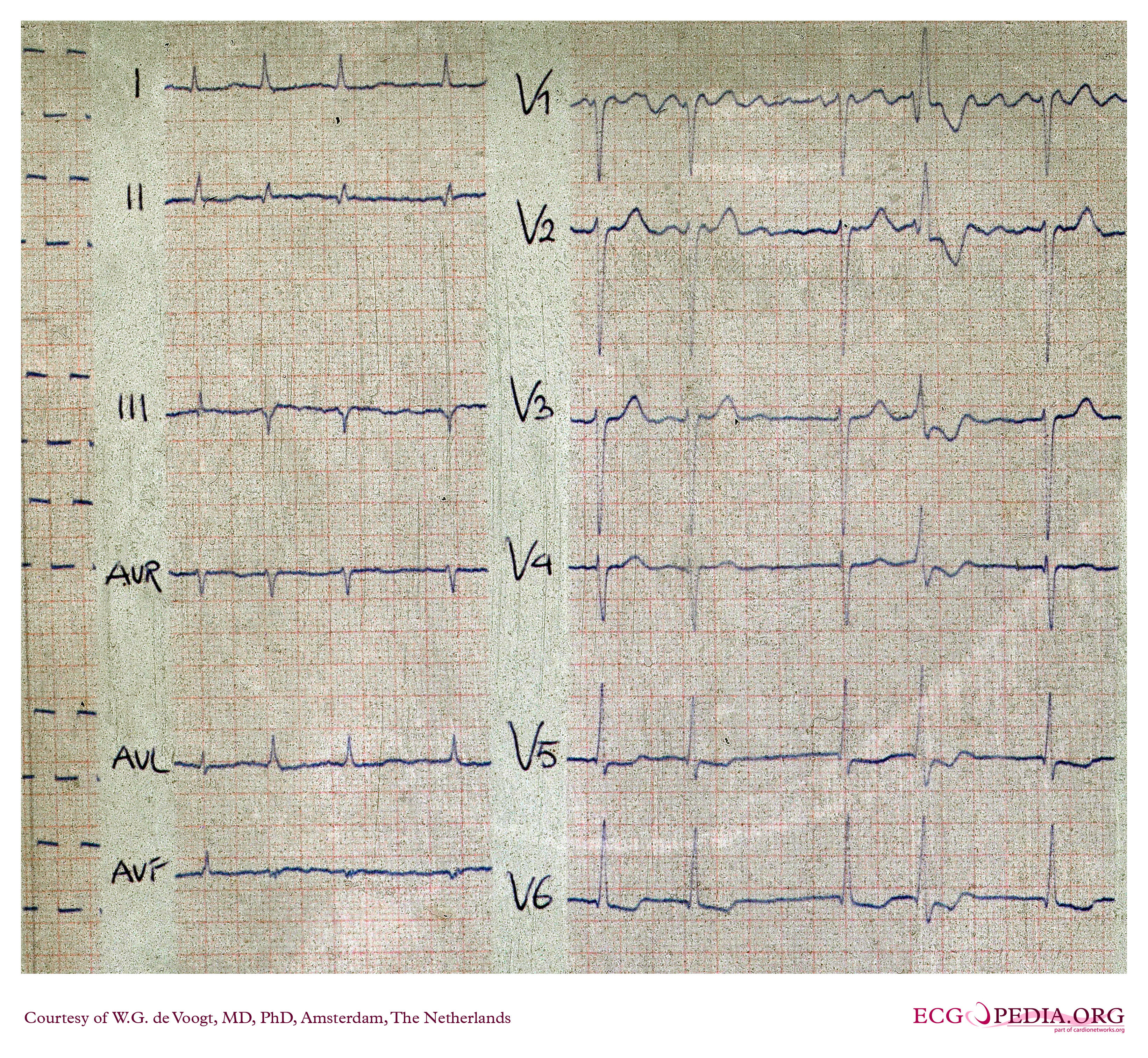
Shown below is an example of an EKG showing atrial fibrillation with rapid ventricular rate response and left bundle branch block.
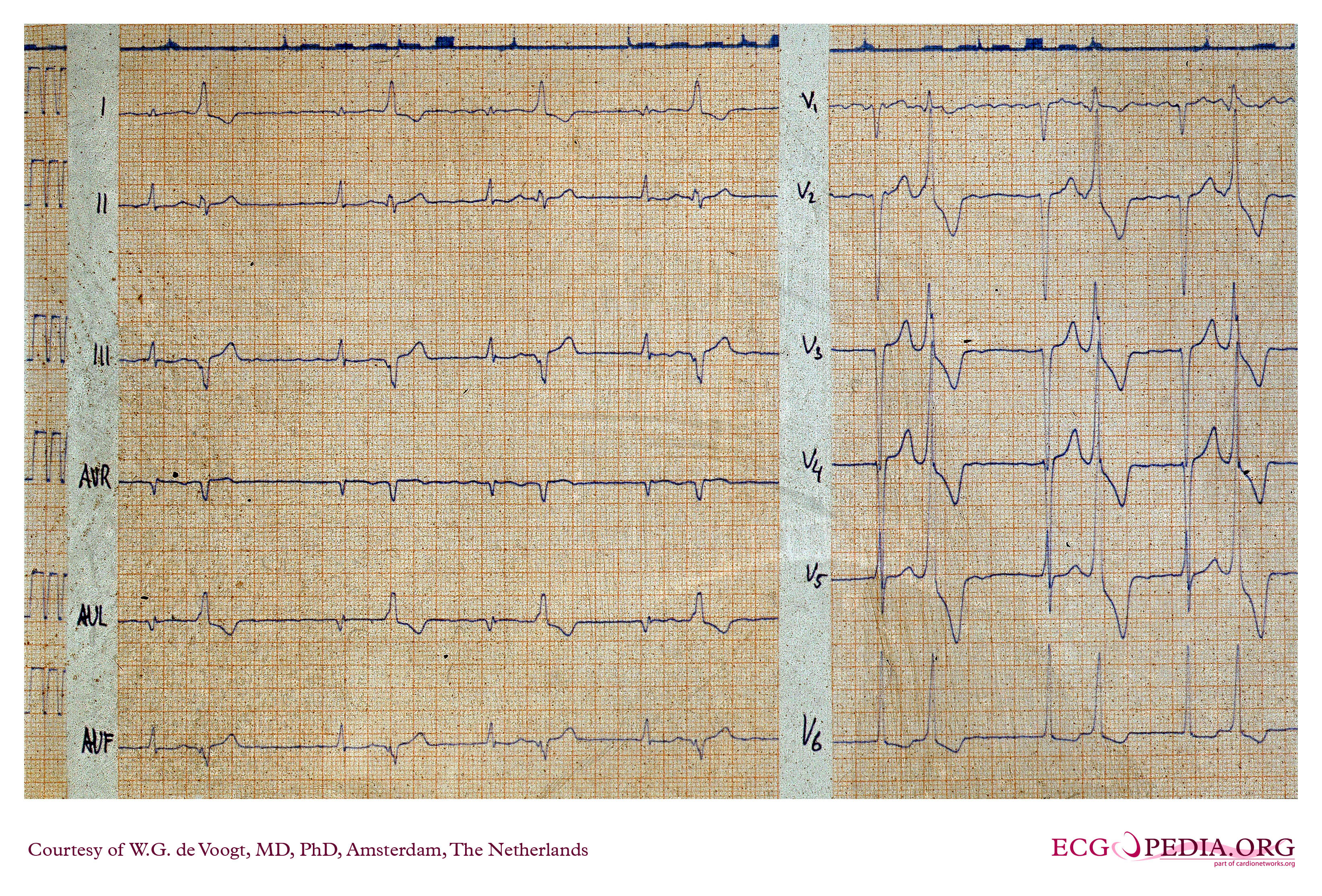
Shown below is an example of an EKG showing atrial fibrillation with rapid ventricular rate response and left bundle branch block.
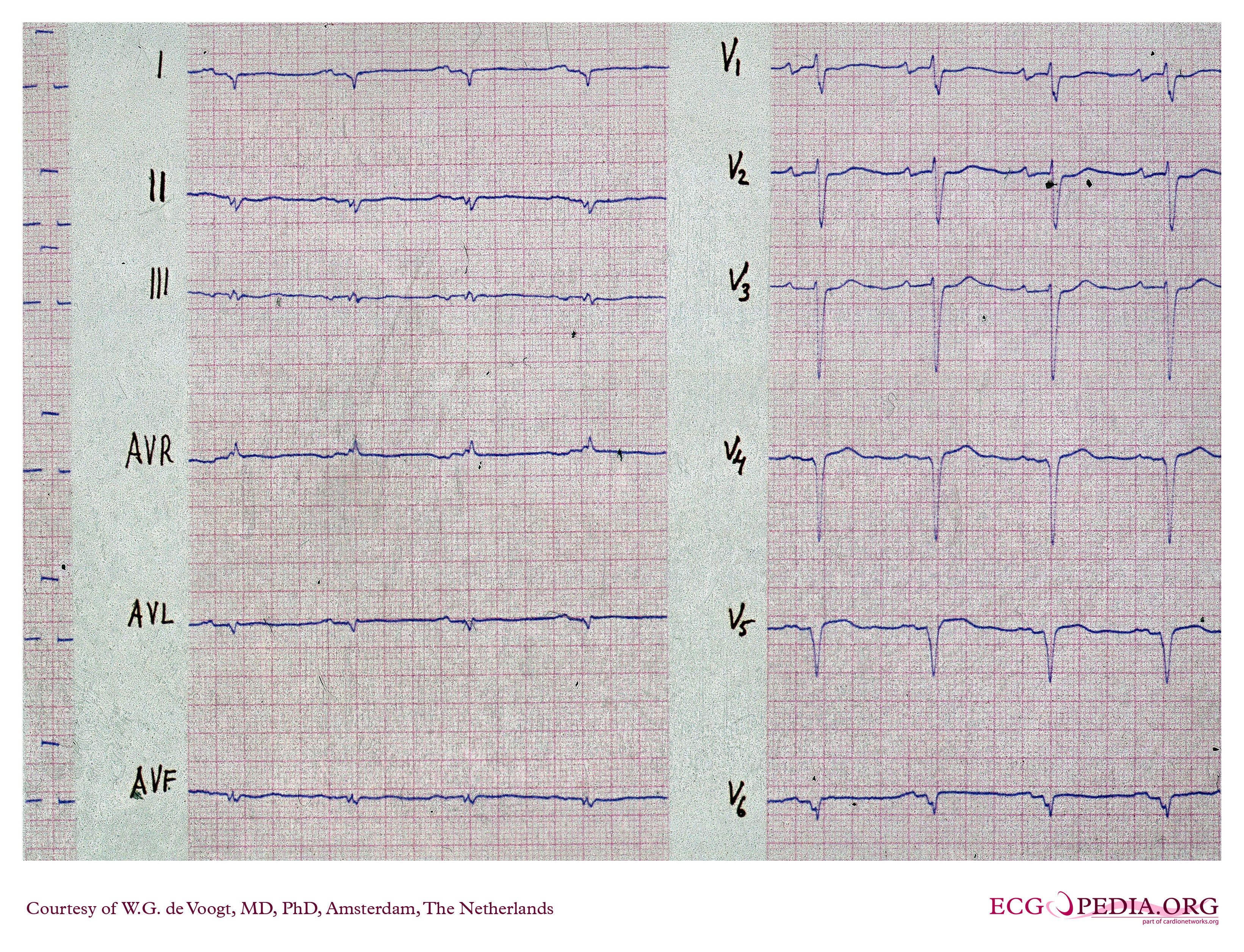
Shown below is an example of an EKG showing atrial fibrillation with rapid ventricular rate response and left bundle branch block.
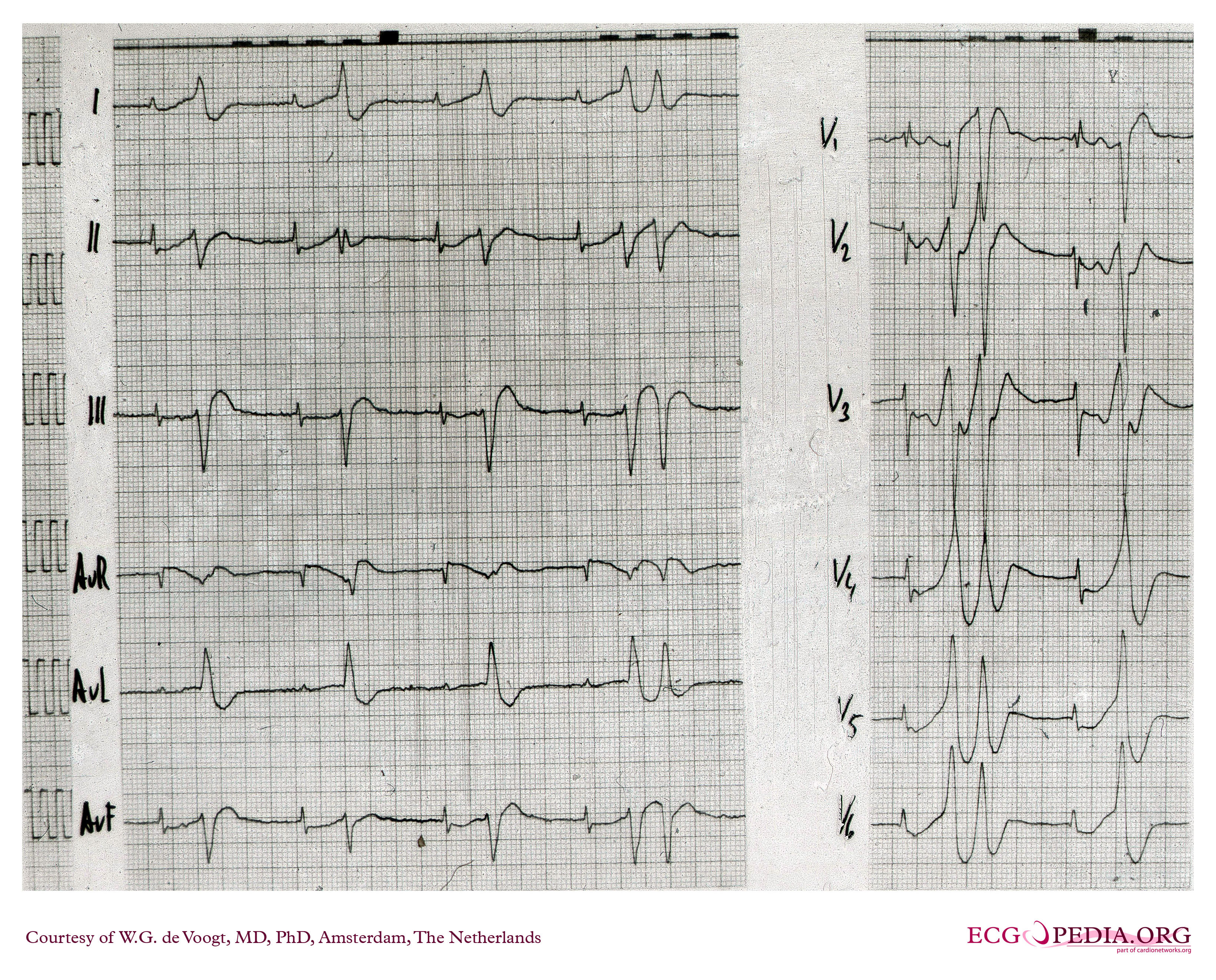
Shown below is an example of an EKG showing atrial fibrillation with rapid ventricular rate response and left bundle branch block.
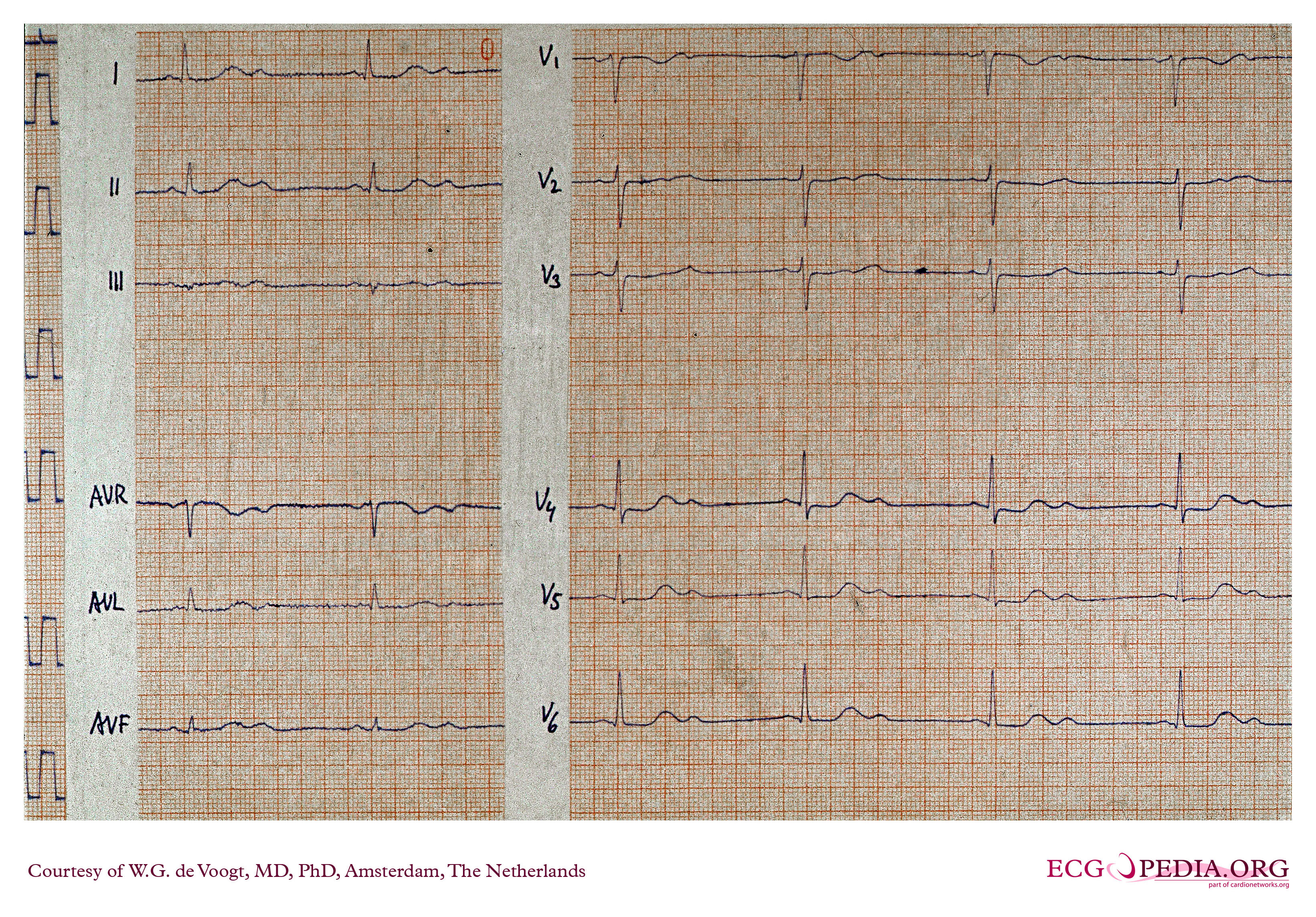
Shown below is an example of an EKG showing atrial fibrillation with rapid ventricular rate response and left bundle branch block.
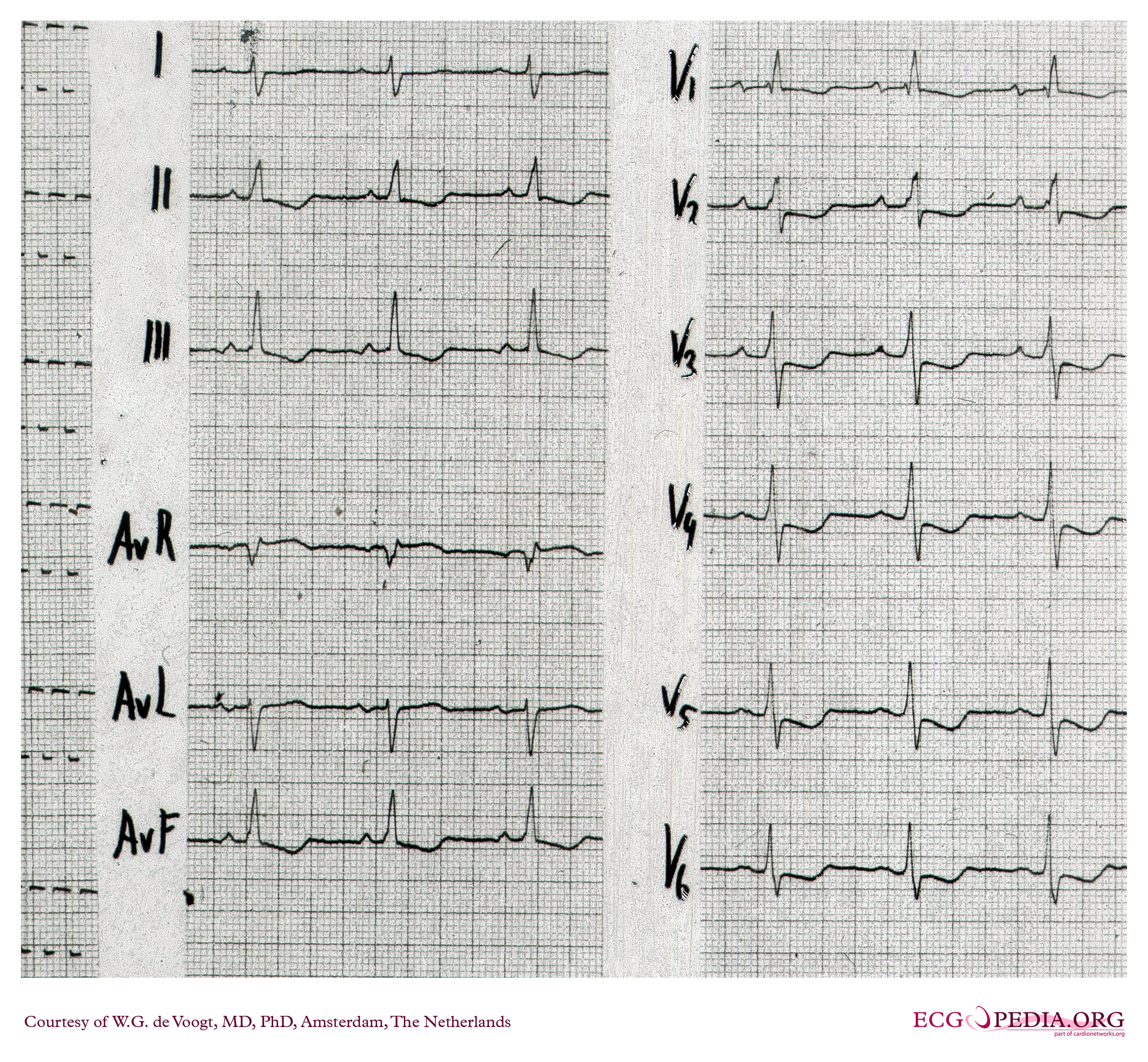
Shown below is an example of an EKG showing atrial fibrillation with rapid ventricular rate response and left bundle branch block.
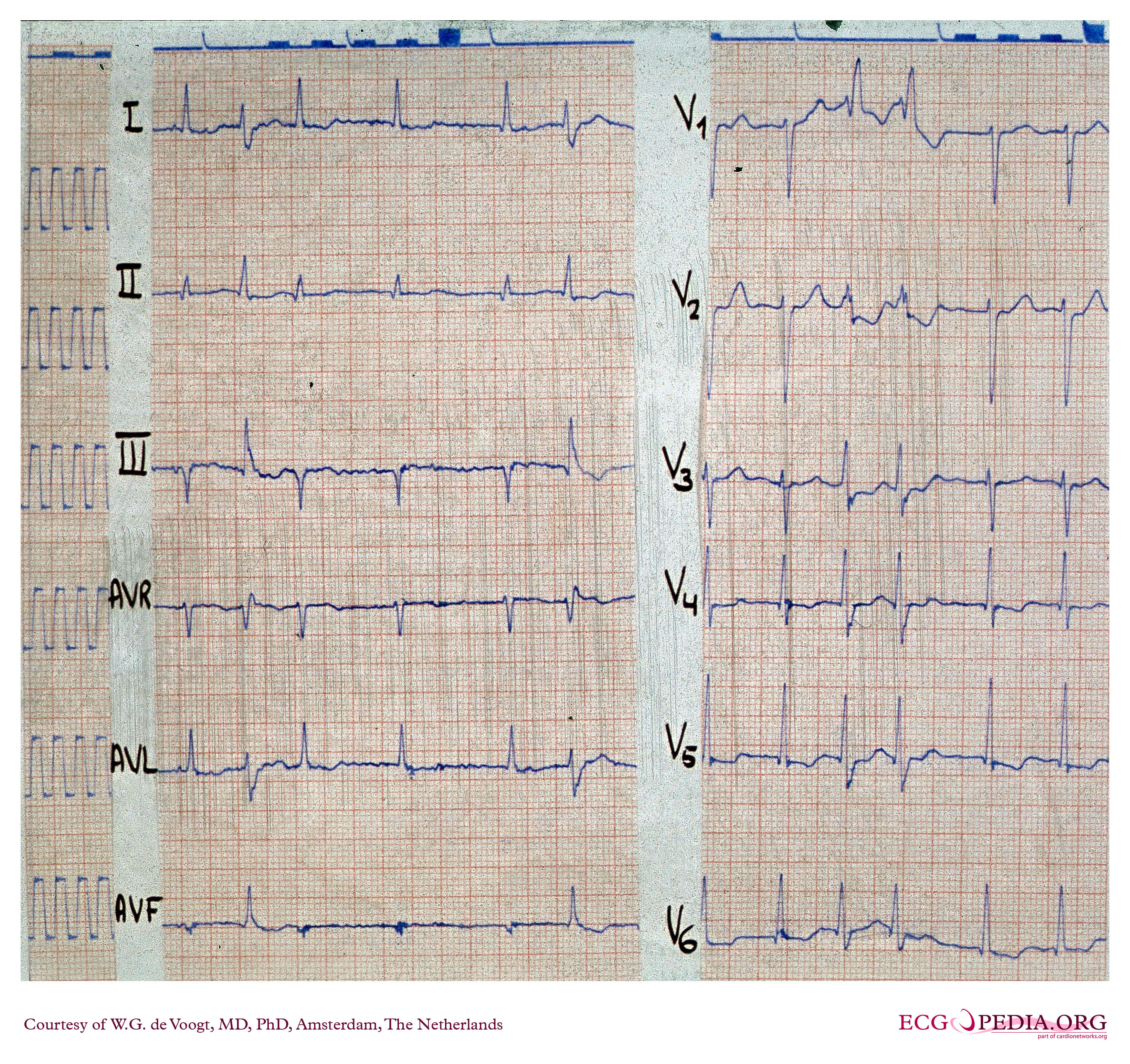
Shown below is an example of an EKG showing atrial fibrillation with rapid ventricular rate response and left bundle branch block.
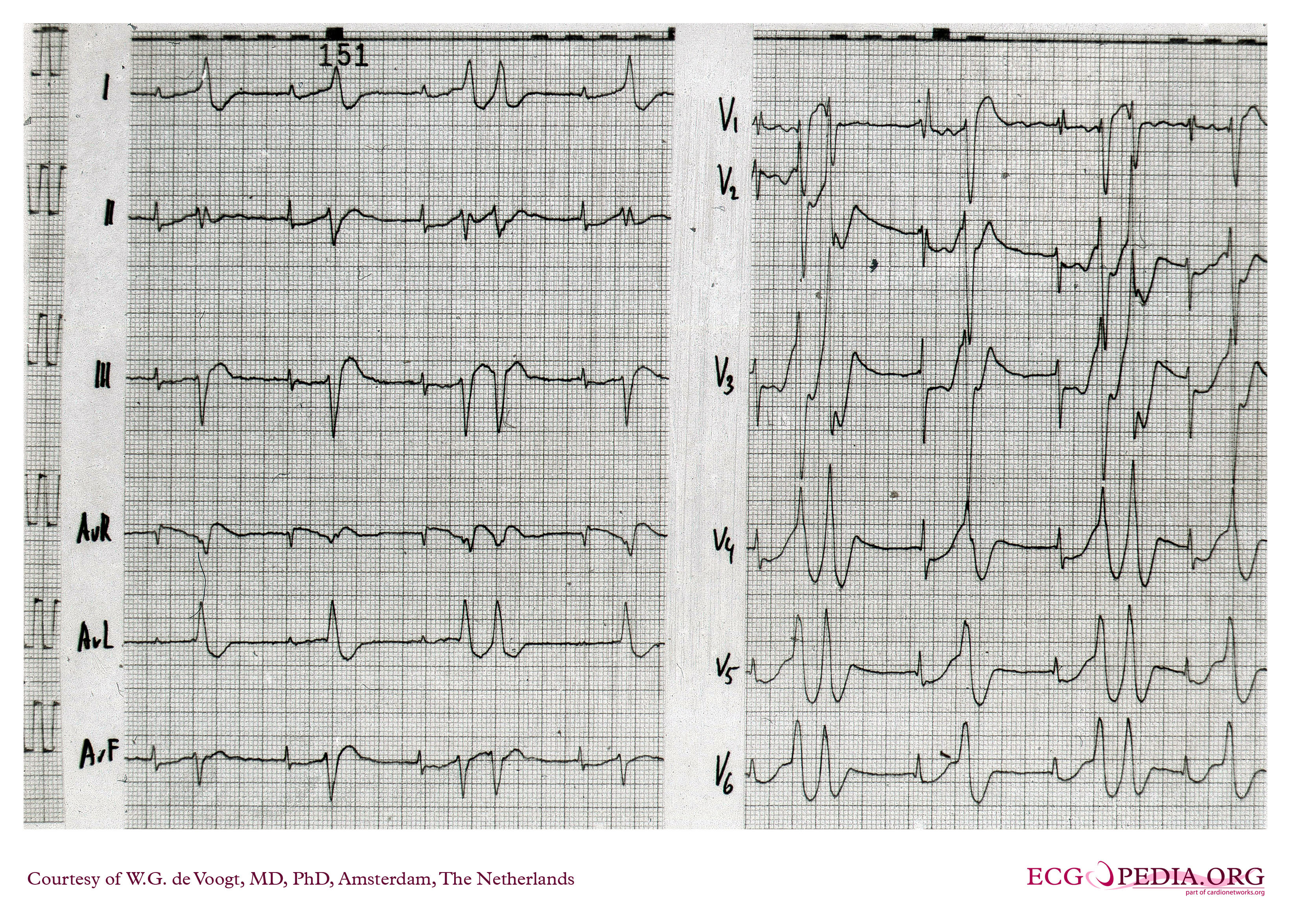
Shown below is an example of an EKG showing atrial fibrillation with rapid ventricular rate response and left bundle branch block.
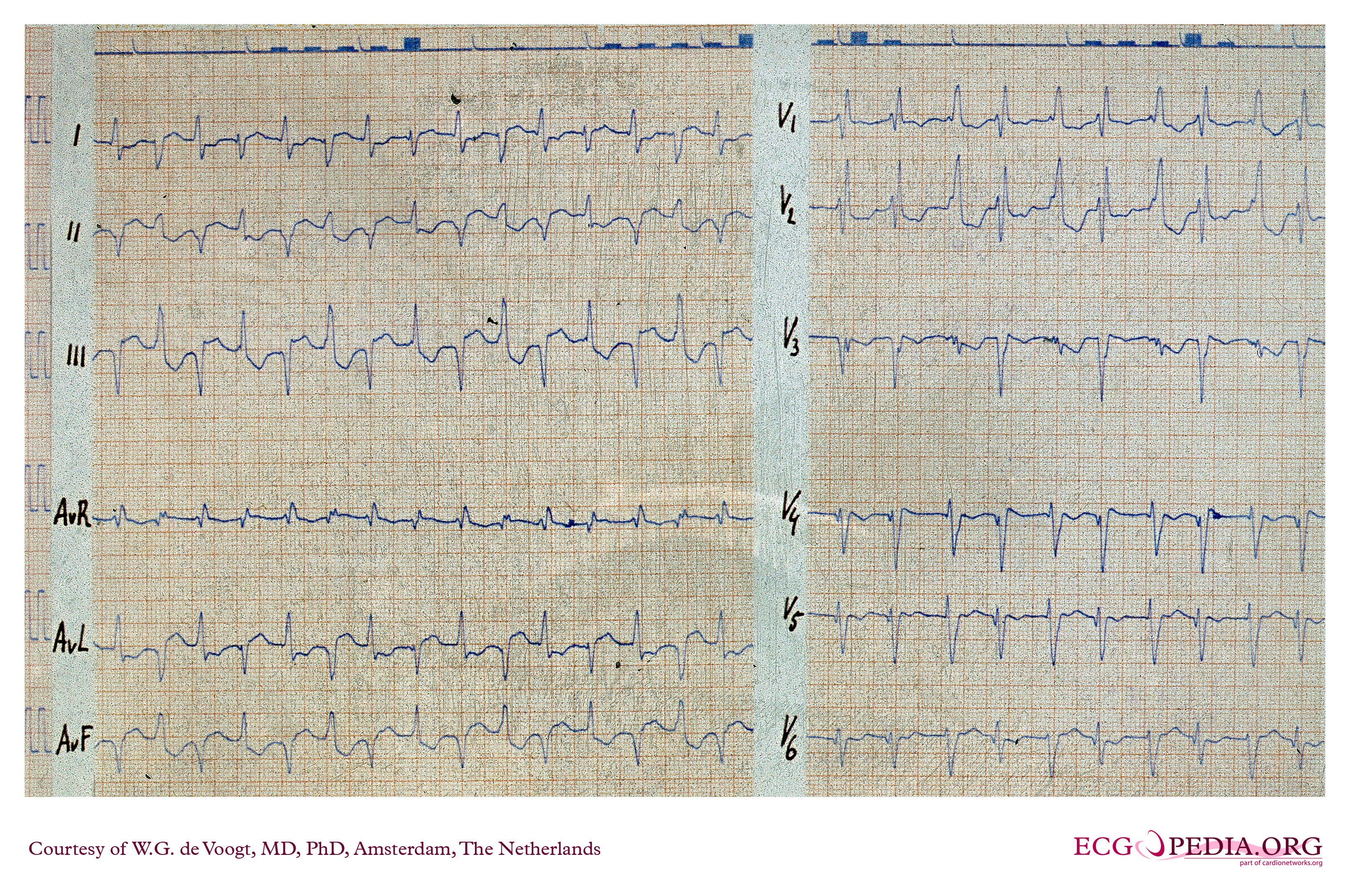
Shown below is an example of an EKG showing atrial fibrillation with rapid ventricular rate response and left bundle branch block.
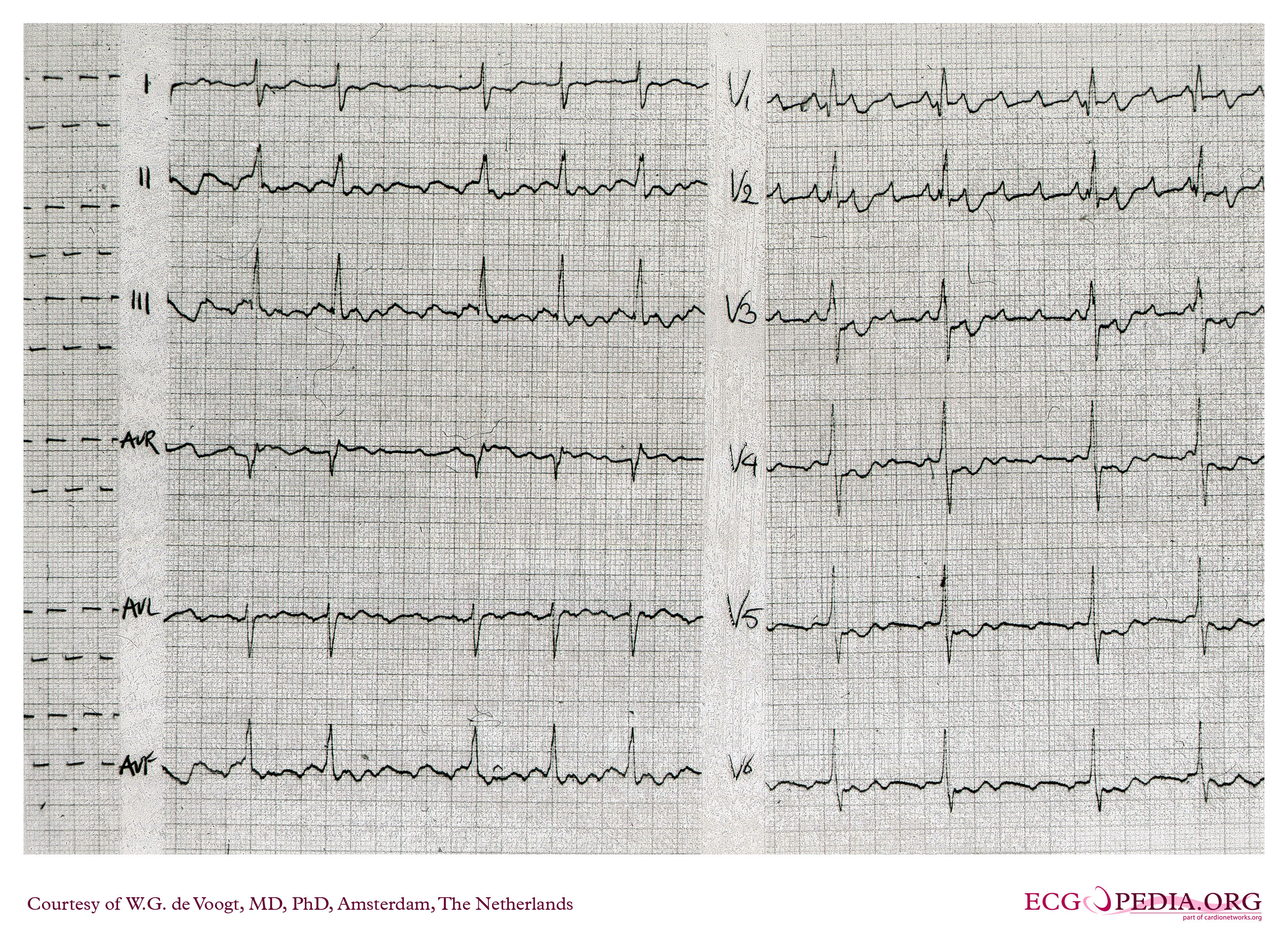
Shown below is an example of an EKG showing atrial fibrillation with rapid ventricular rate response and left bundle branch block.
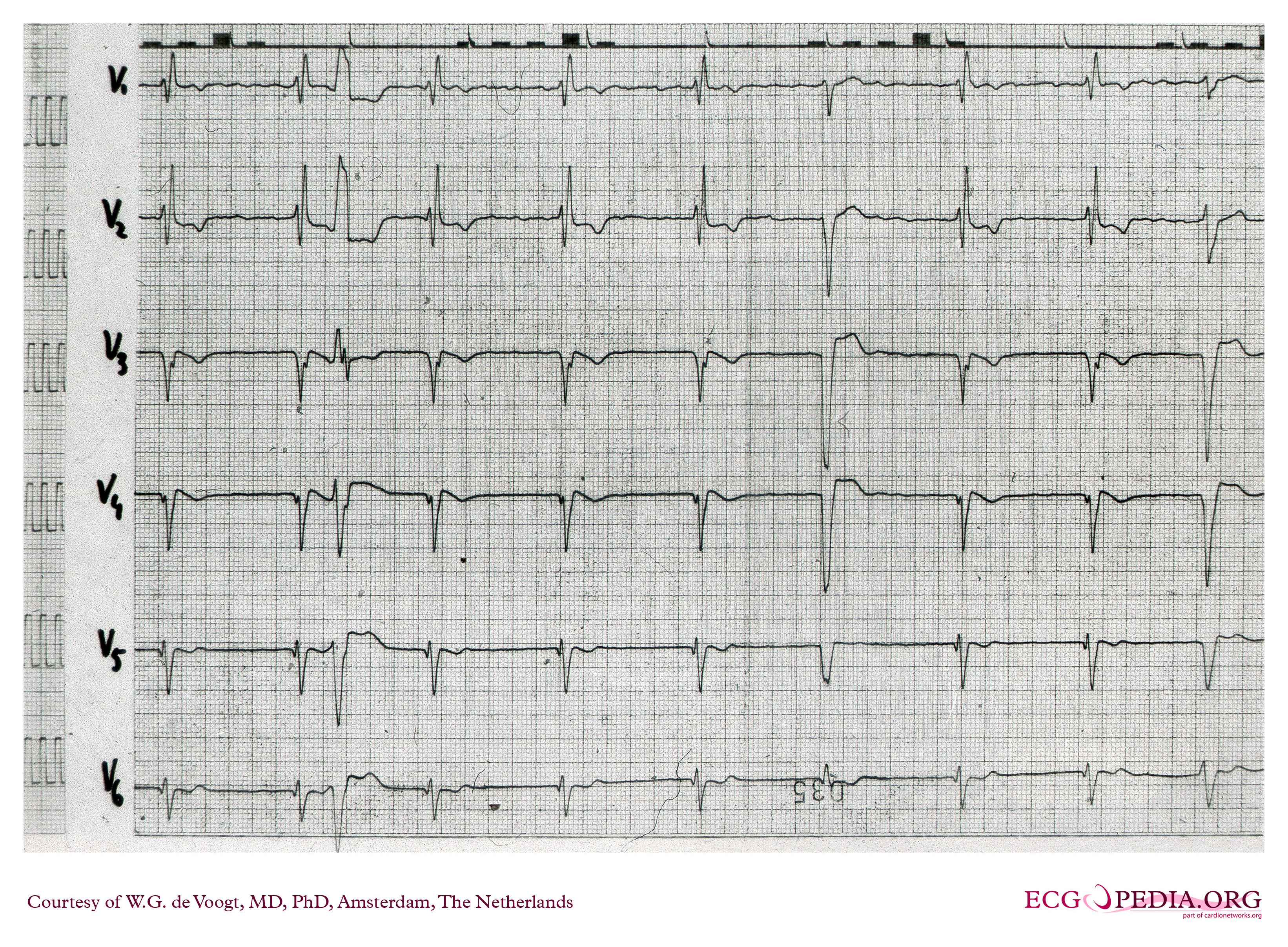
Shown below is an example of an ECG showing atrial fibrillation with rapid ventricular response. Left axis deviation.

Shown below is an example of an ECG showing atrial fibrillation with rapid ventricular response. Left axis deviation.

Shown below is an example of an ECG showing Atrial fibrillation with slow ventricular response. Bifascicular block [Right Bundle Branch Block + Left anterior fascicular block (LAFB)].

Shown below is an example of an ECG showing Atrial fibrillation. Septal myocardial infarction (age indetermined)

Shown below is an example of an ECG showing Atrial fibrillation.
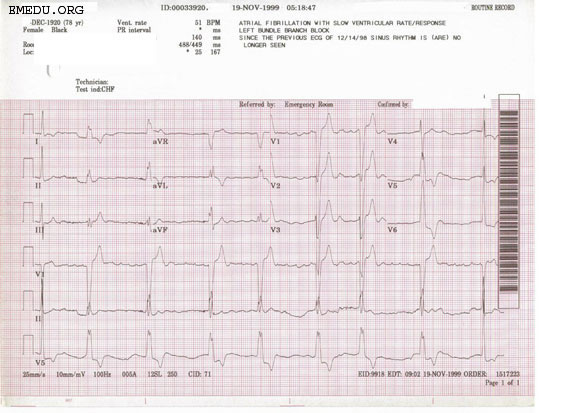
Shown below is an example of an ECG showing Atrial fibrillation.

Shown below is an example of an ECG showing Atrial fibrillation.

Shown below is an example of an ECG showing Atrial fibrillation.

Shown below is an example of an ECG showing Atrial fibrillation.

Shown below is an example of an ECG showing Atrial fibrillation.

Shown below is an example of an ECG showing Atrial fibrillation.
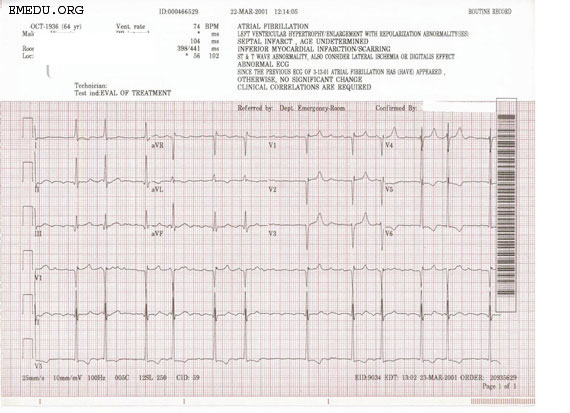
Shown below is an example of an ECG showing Atrial fibrillation.

Shown below is an example of an ECG showing Atrial fibrillation.

Shown below is an example of an ECG showing Atrial fibrillation.

Shown below is an example of an ECG showing Atrial fibrillation.

Shown below is an example of an ECG showing Atrial fibrillation.

Shown below is an example of an ECG showing Atrial fibrillation.

Shown below is an example of an ECG showing Atrial fibrillation.

Shown below is an example of an ECG showing Atrial fibrillation.

Shown below is an example of an ECG showing Atrial fibrillation.

Shown below is an example of an ECG showing Atrial fibrillation.

Shown below is a continuous tracing taken during a cardioversion of an elderly woman for atrial fibrillation. The patient was on amiodarone and the cardioverter was set to 150 joules.

Shown below is a strip from a patient being cardioverted for atrial fibrillation. The patient was taking sotalol and coumadin. This is the first shock which was set at 150 joules and delivered via defibrillator pads placed with the positive in the V1 position and the negative on the back between the left scapula and the spine.

Shown below is an example of an ECG showing Atrial fibrillation.

Shown below is an example of an ECG showing Atrial fibrillation.

Shown below is an example of an ECG showing Atrial fibrillation.
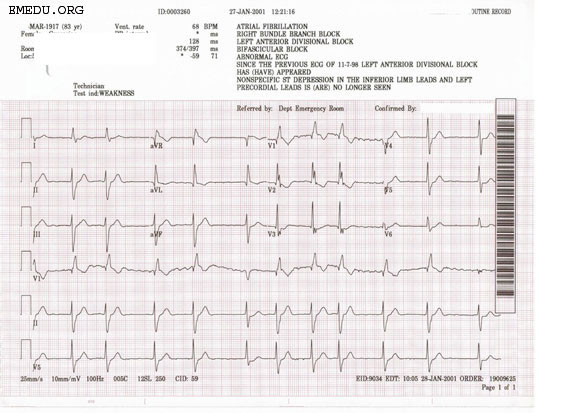
Shown below is an example of an ECG showing Atrial fibrillation.

Shown below is an example of an ECG showing Atrial fibrillation.

Shown below is an example of an ECG showing Atrial fibrillation.

Shown below is an example of an ECG showing Atrial Fibrillation with LVH and Strain.
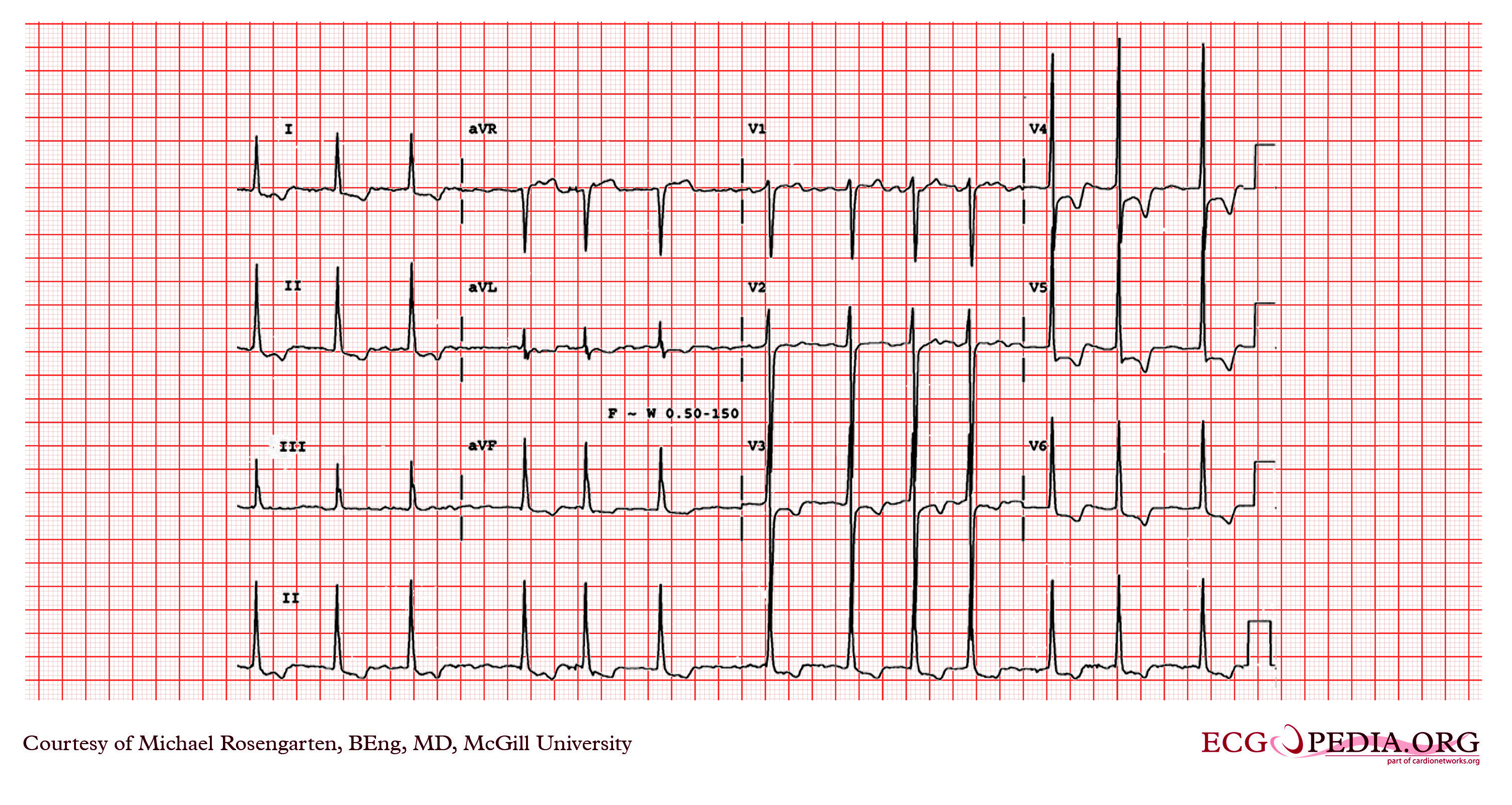
Shown below is an example of a low quality ECG showing atrial fibrillation. The R wave in leads V5 and V6 are greater than 35mm and there are ST/T wave changes. This is consistent with left ventricular hypertrophy.

Shown below is an EKG that shows atrial fibrillation with wide spread ST depressions suggestive of ischemia or possibly non-Q myocardial infarction. In this case there were no enzyme changes suggestive of a myocardial infarction and the changes probably represent ischemia secondary to the ventricular tachycardia terminated by the lidocaine. It is also possible that the ST changes are purely a result of the tachycardia but in this case this would seem unlikely.

Sources
Copyleft image obtained courtesy of ECGpedia, http://en.ecgpedia.org/index.php?title=Special:NewFiles&dir=prev&offset=20080806182927&limit=500
References

